HT-smFISH: a cost-effective and flexible workflow for high-throughput single-molecule RNA imaging
Adham Safieddine, Emeline Coleno, Frederic Lionneton, Abdel-Meneem Traboulsi, Soha Salloum, Charles-Henri Lecellier, Thierry Gostan, Virginie Georget, Cédric Hassen-Khodja, Arthur Imbert, Florian Mueller, Thomas Walter, Marion Peter, Edouard Bertrand
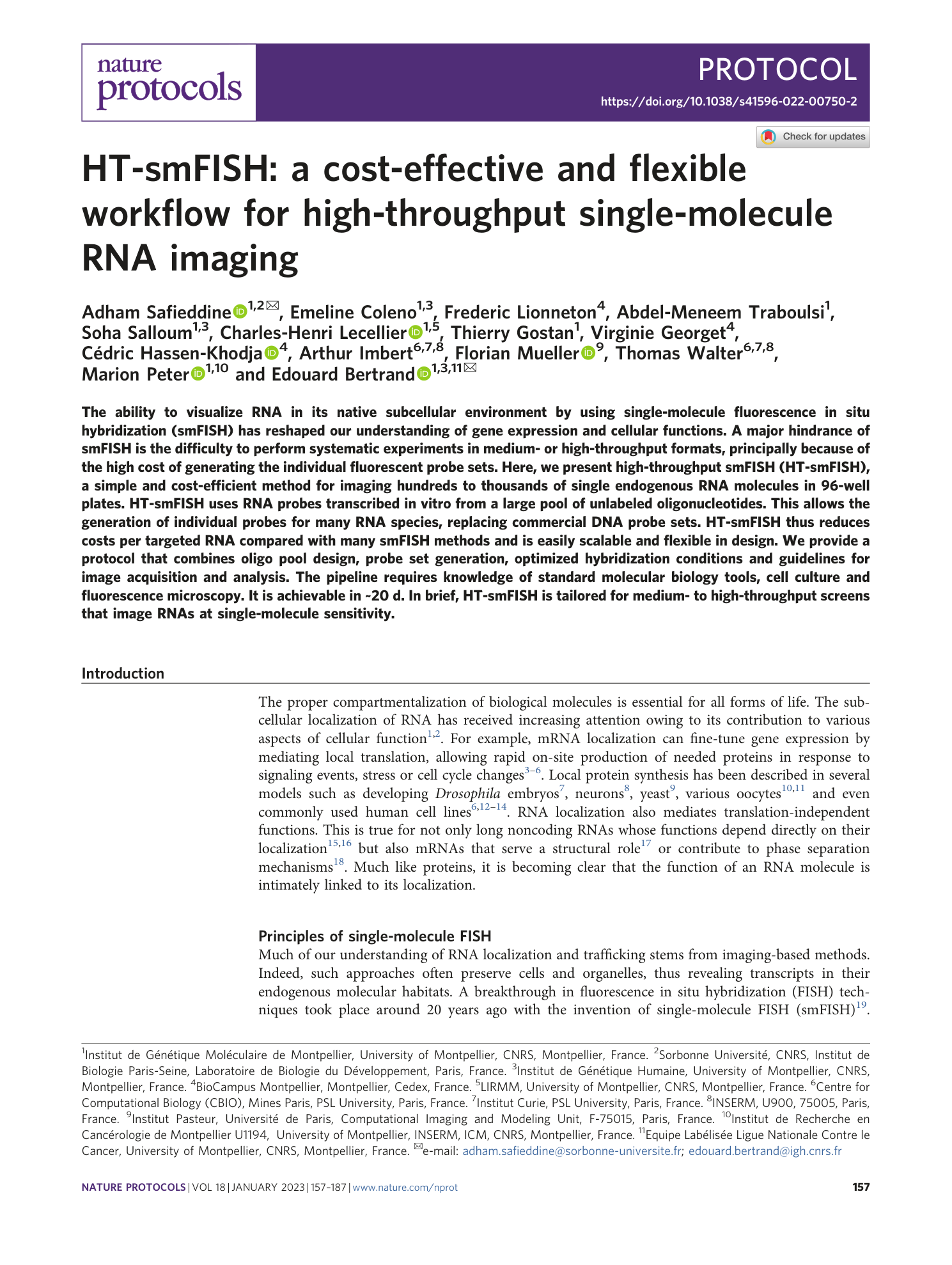
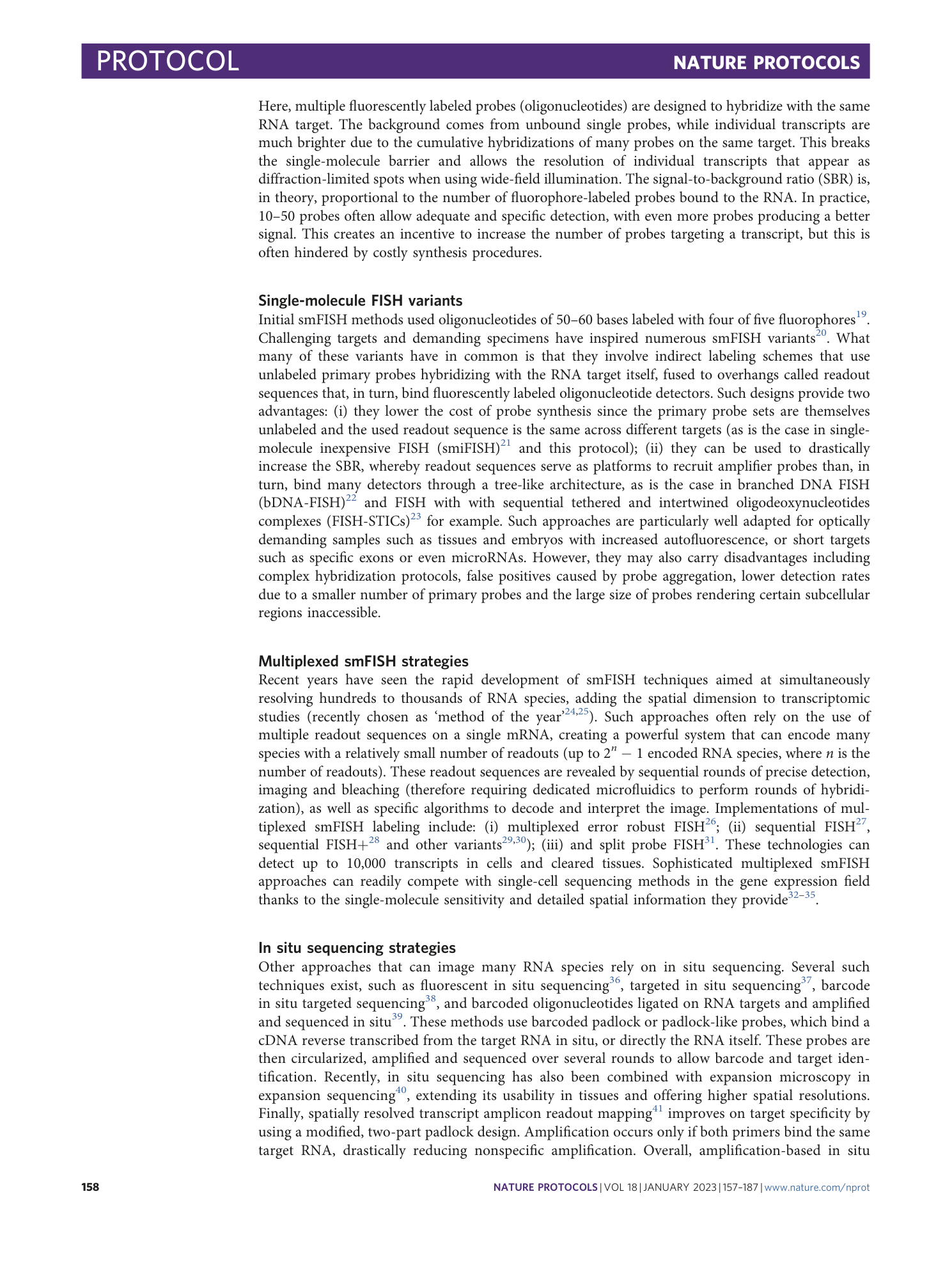
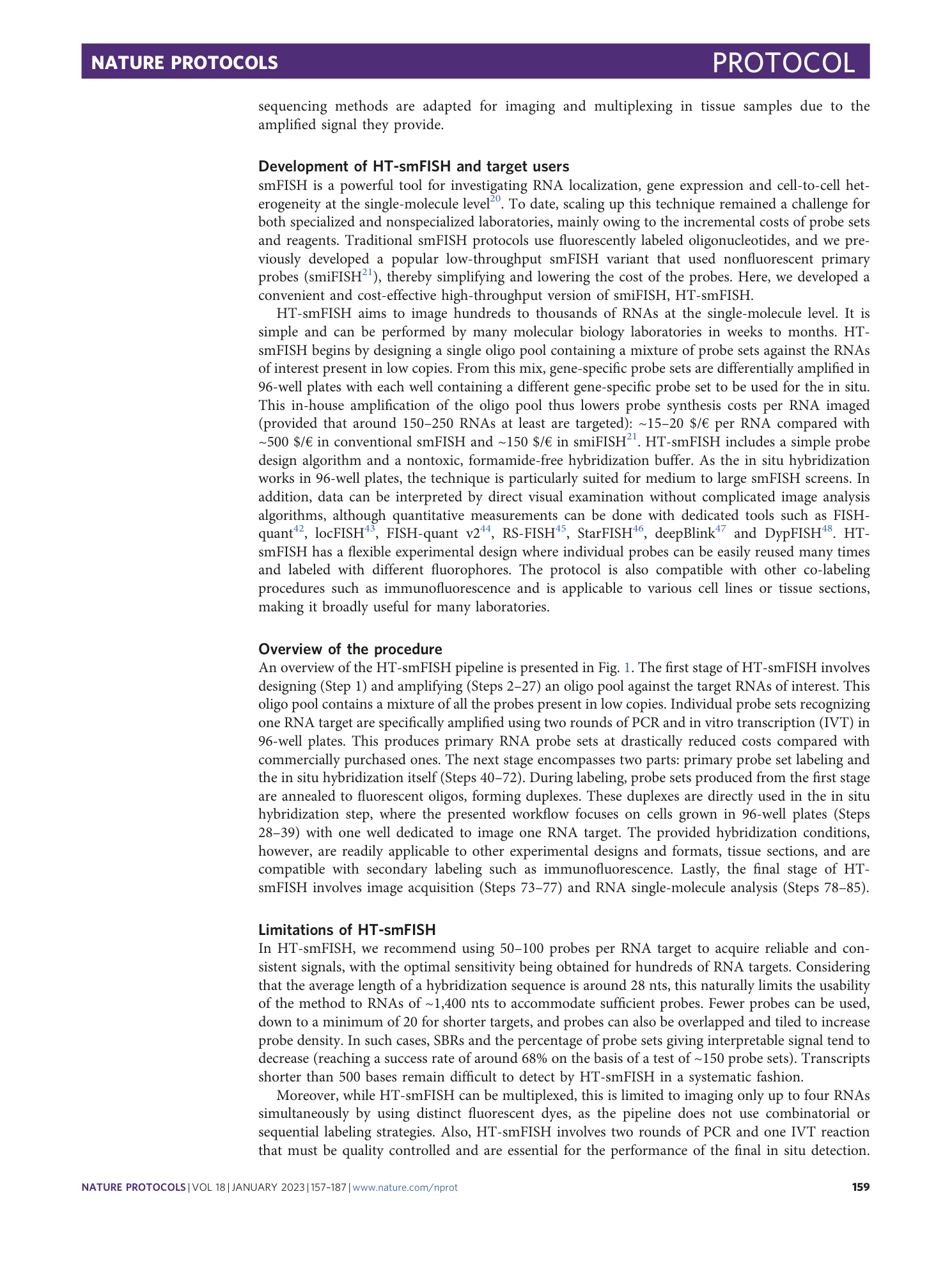
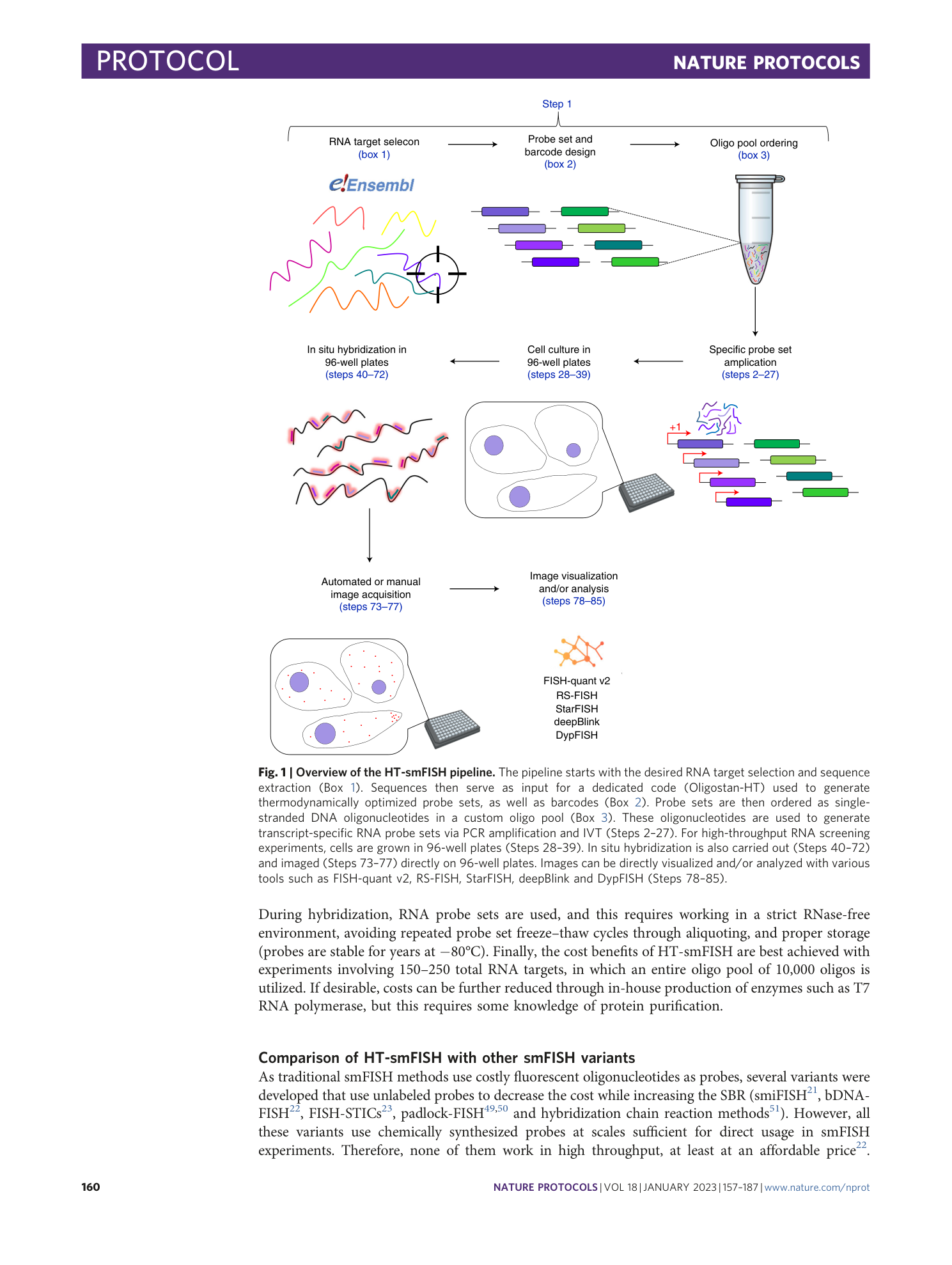
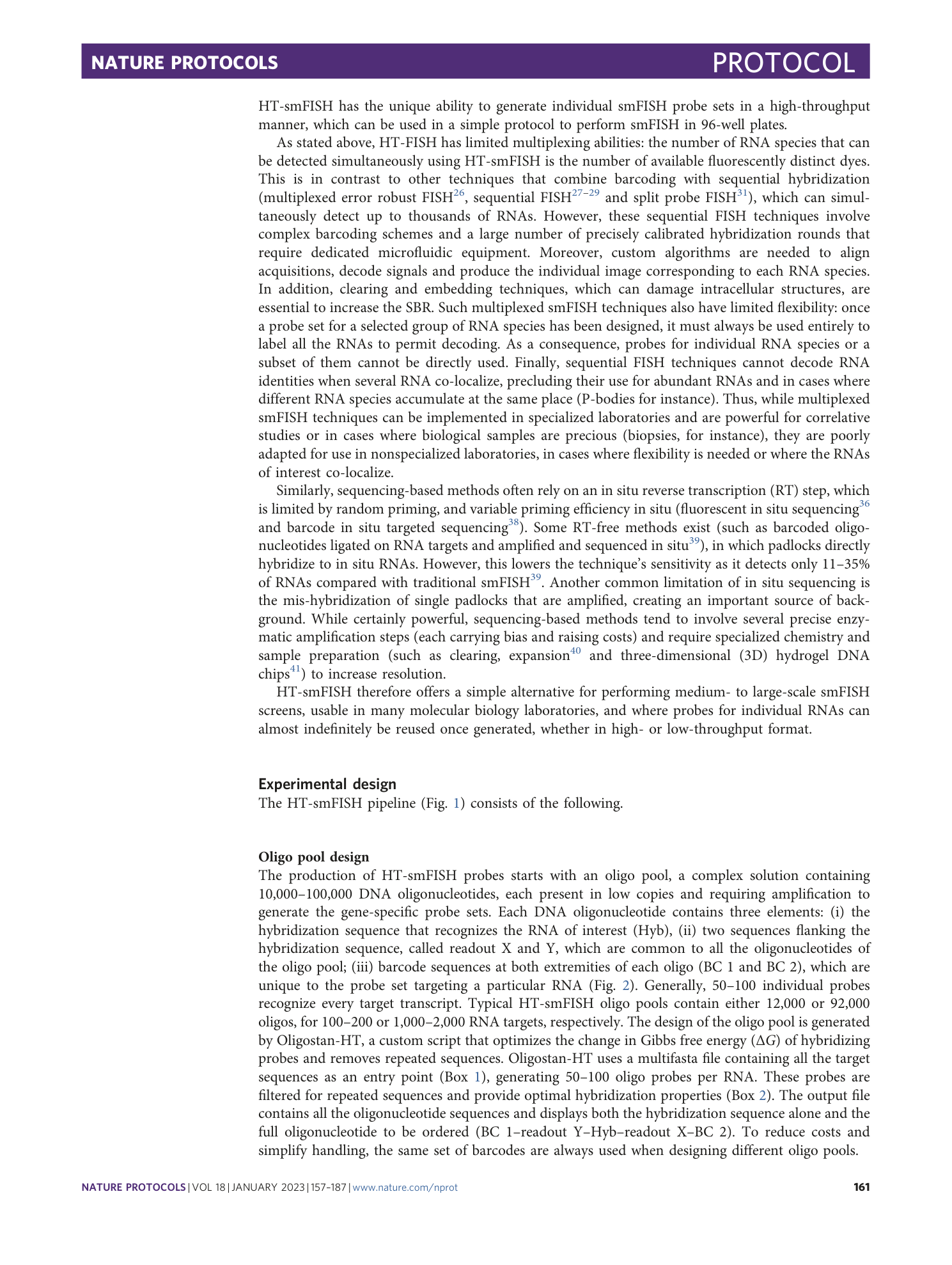

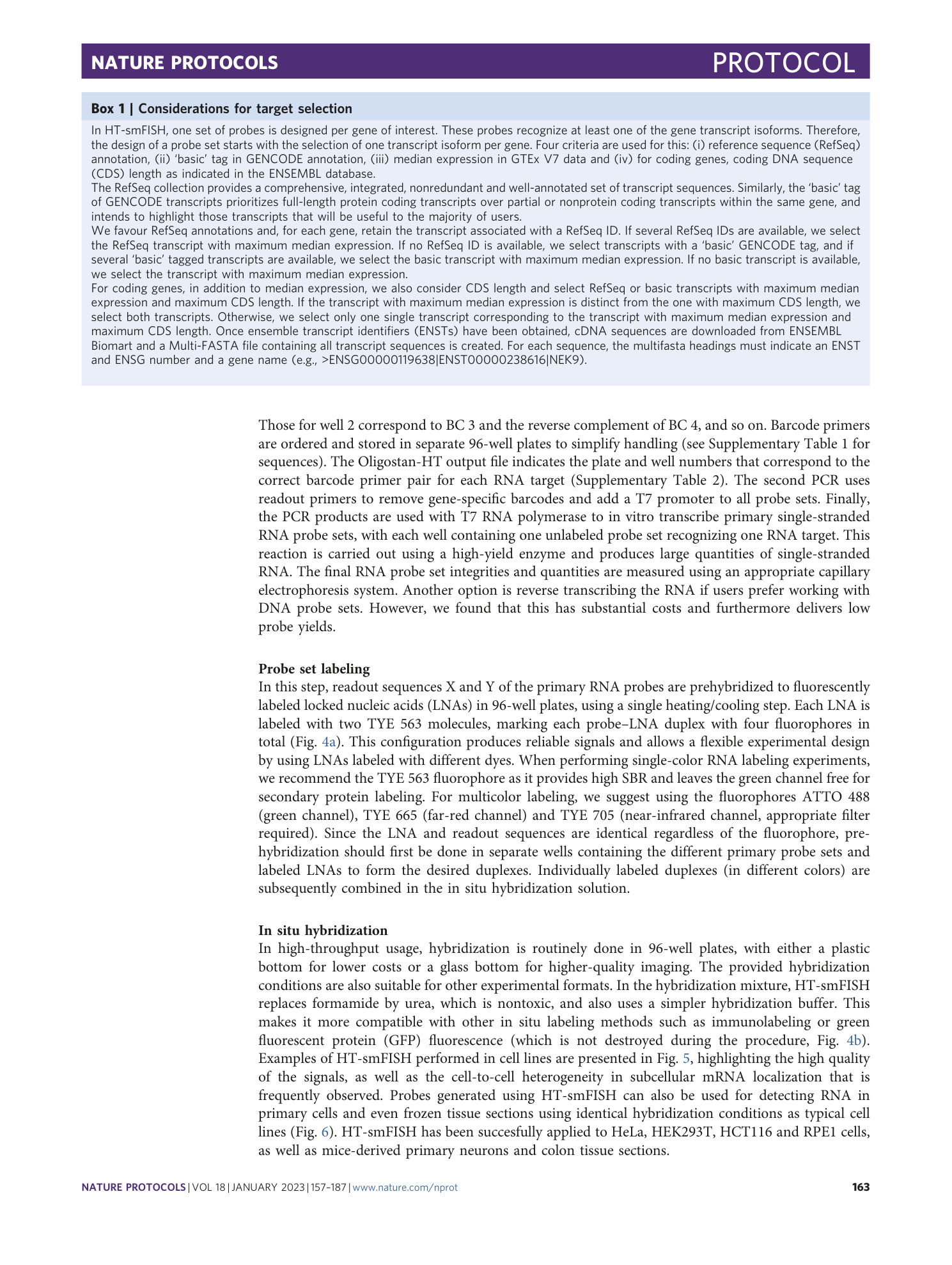
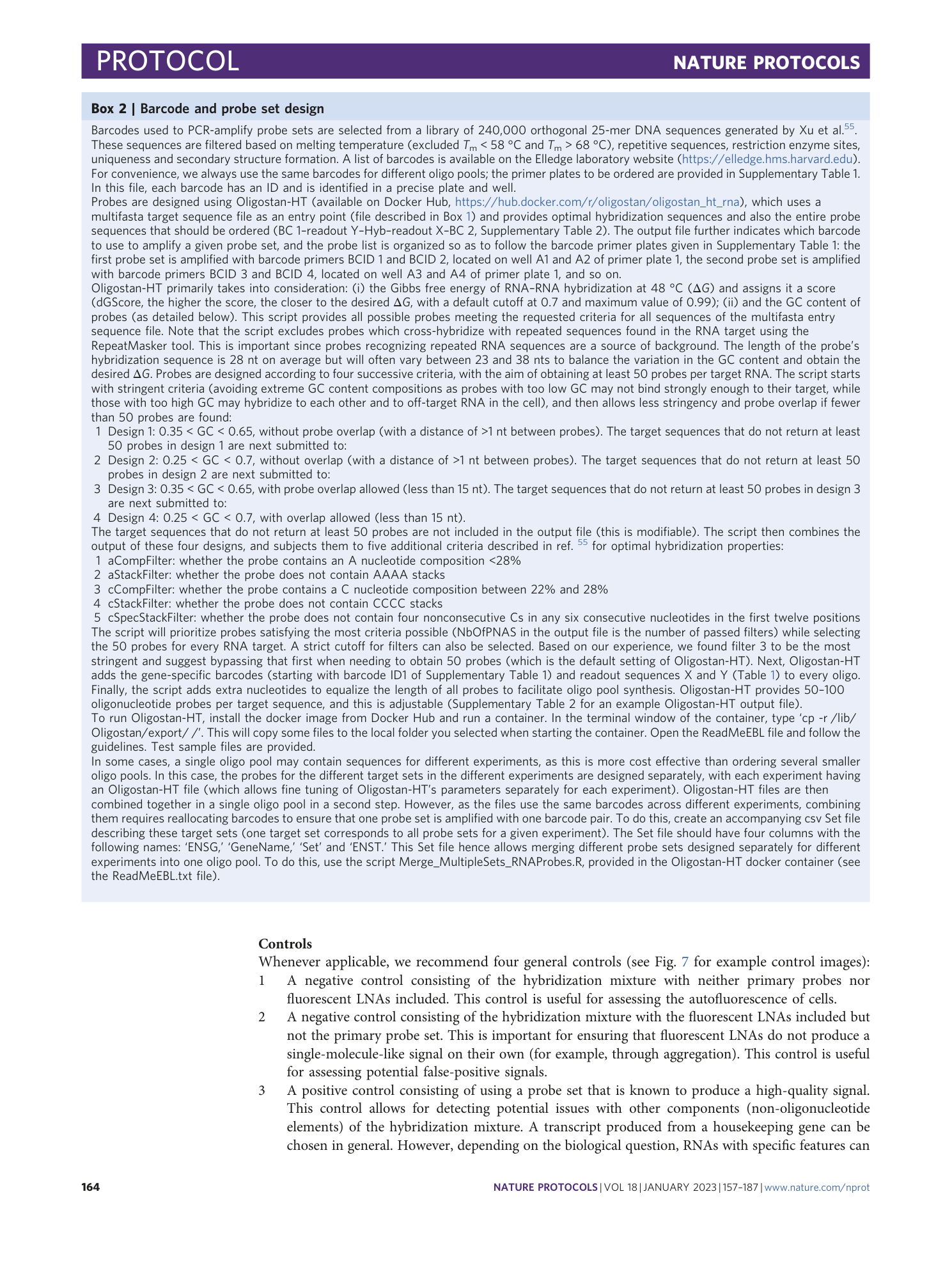
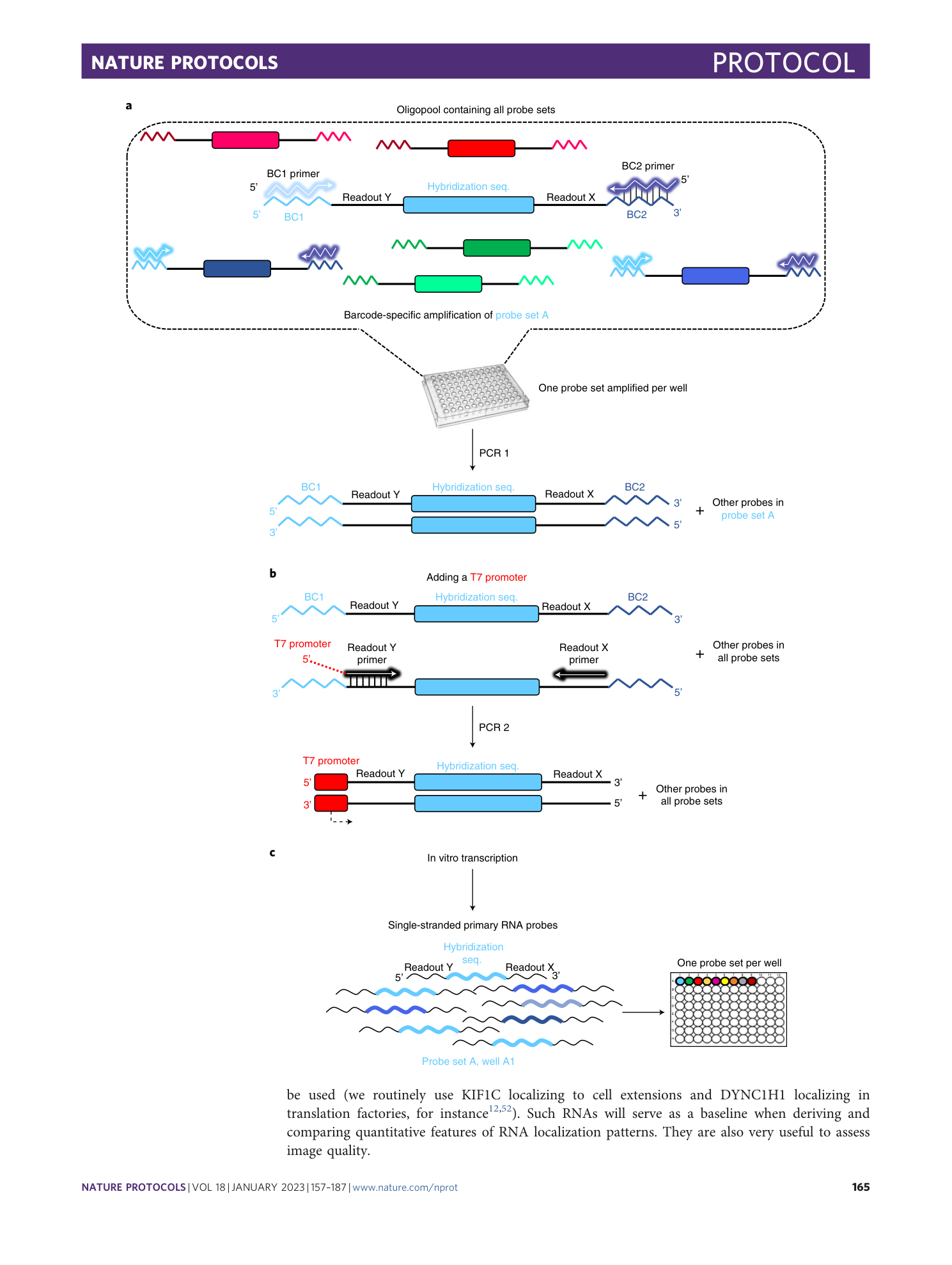
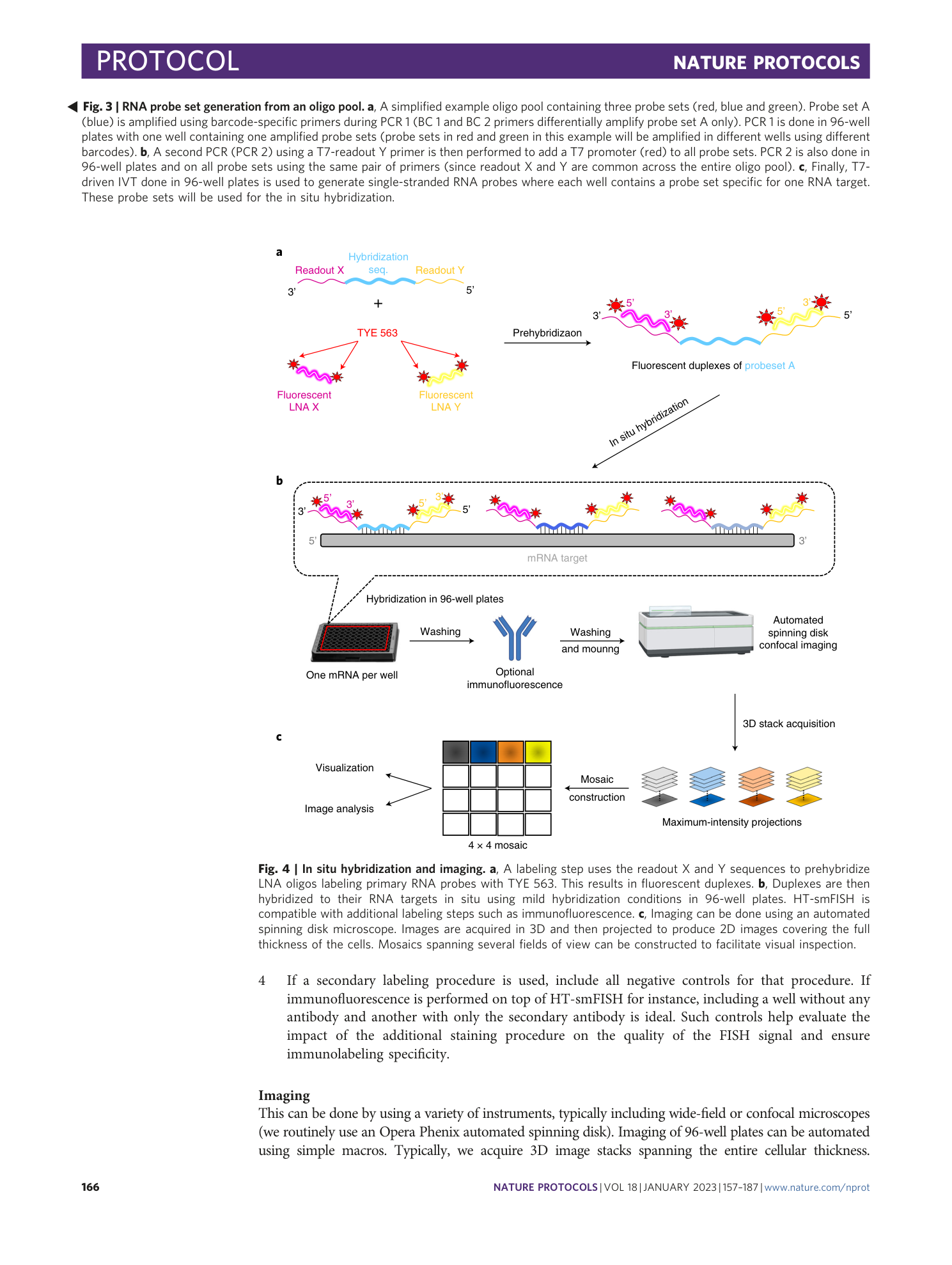
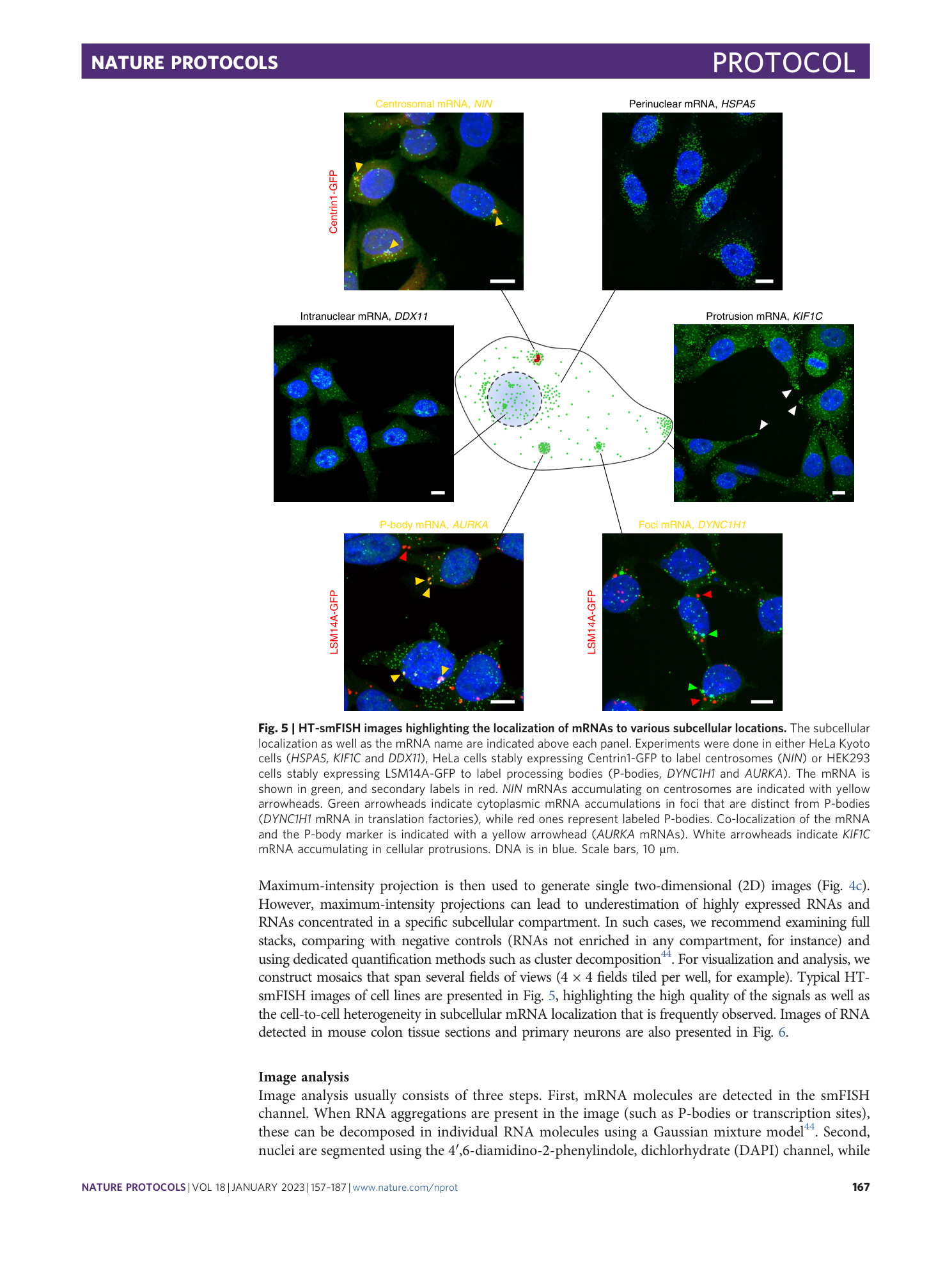
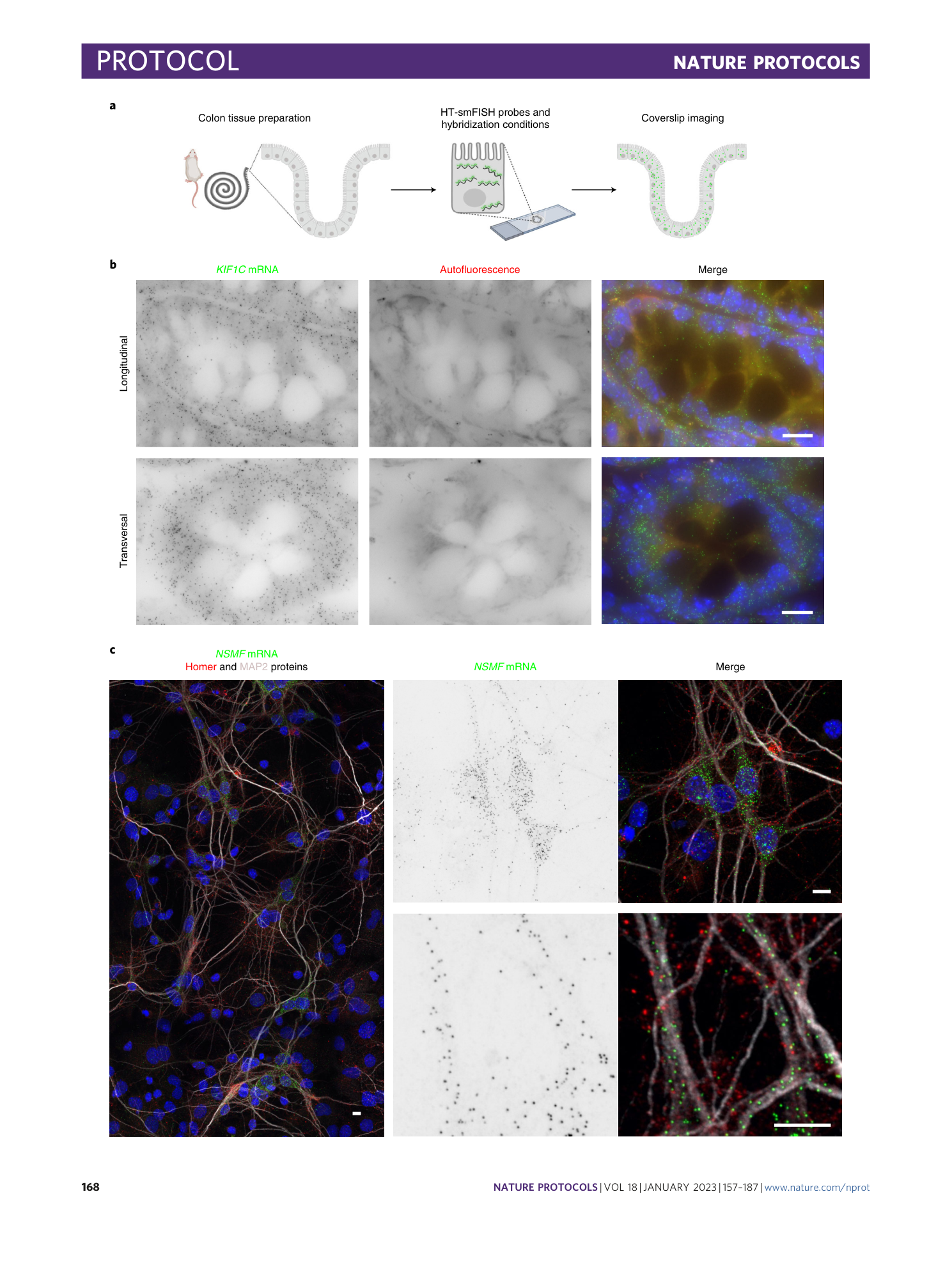
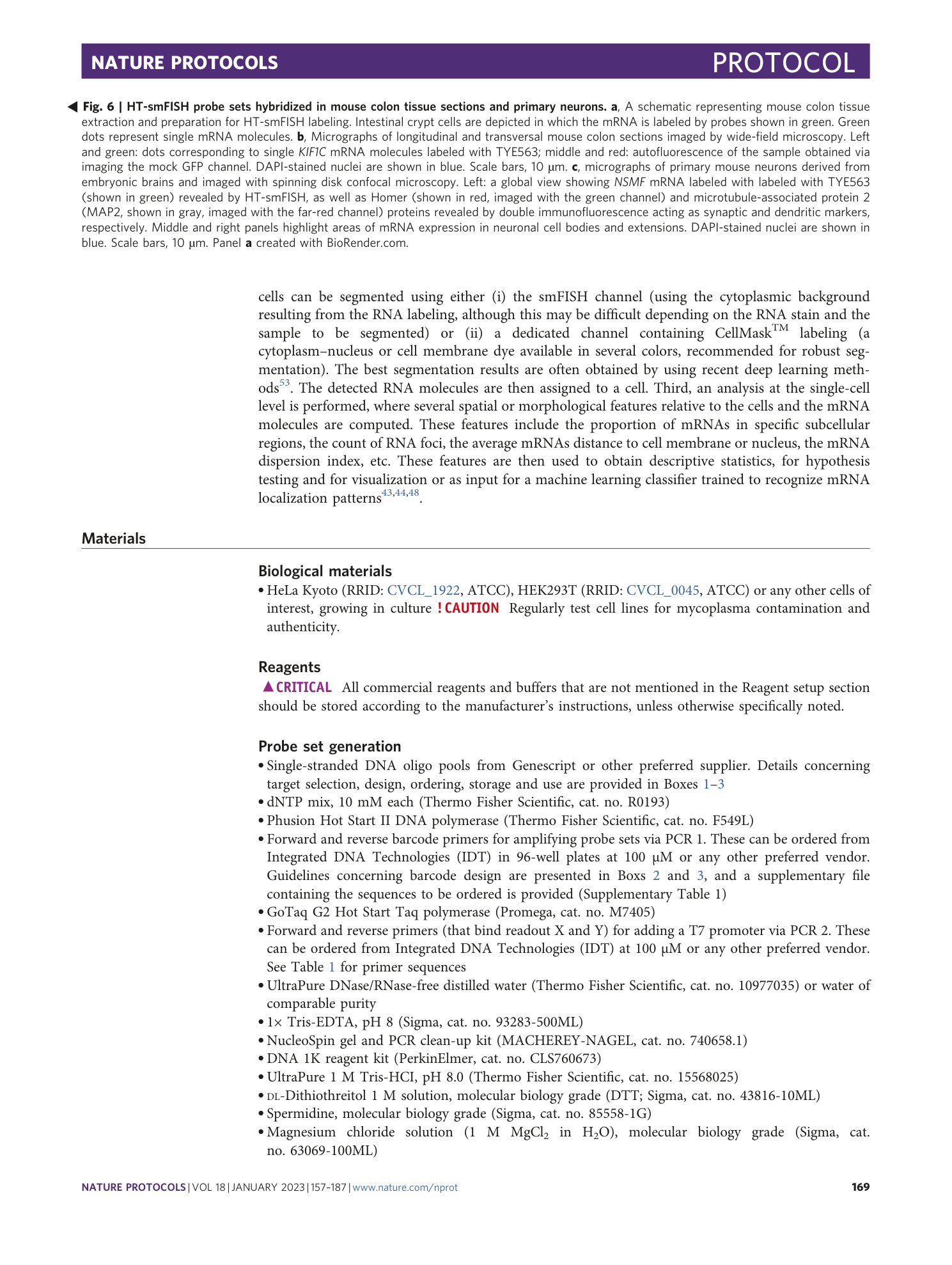

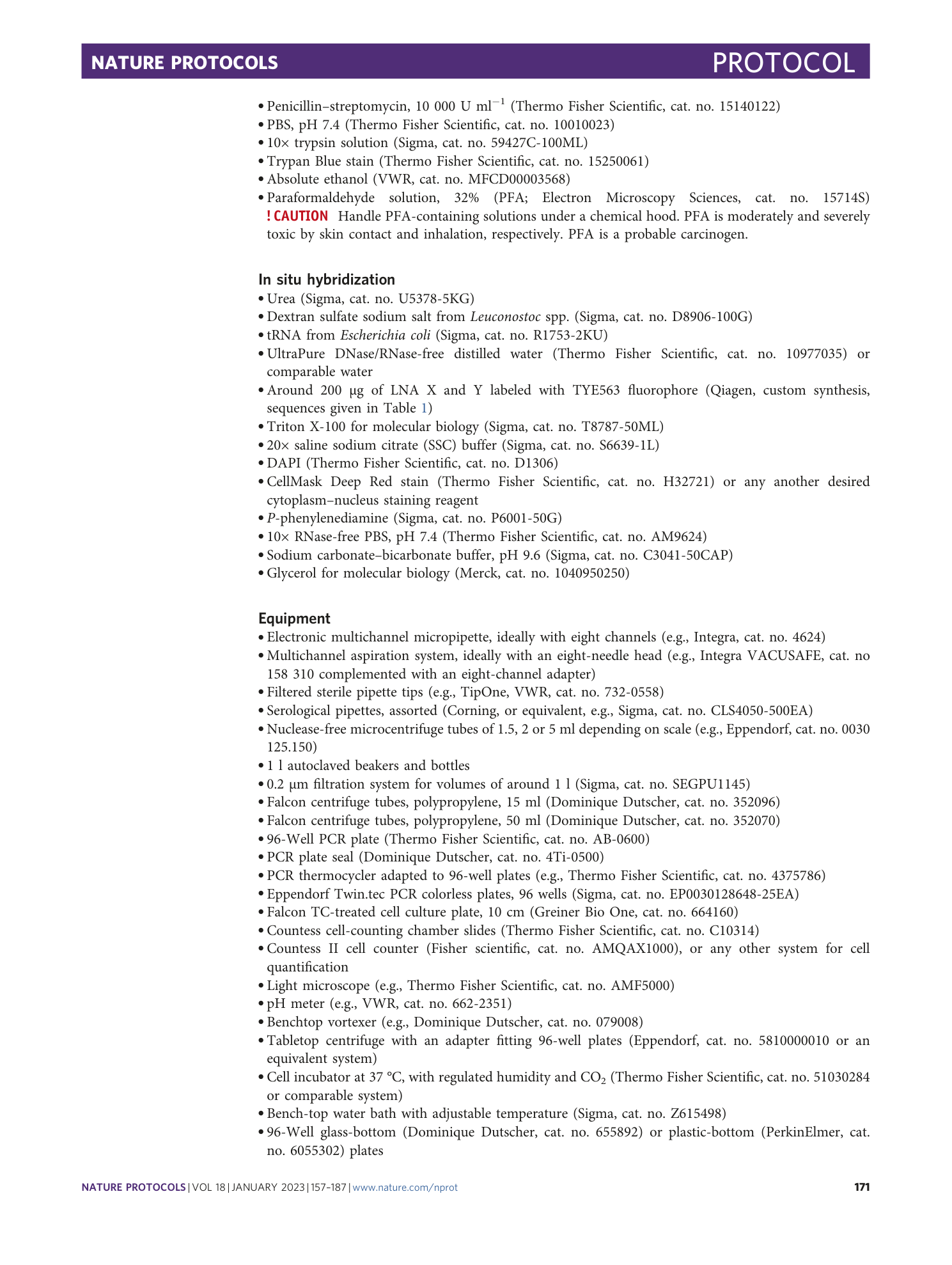
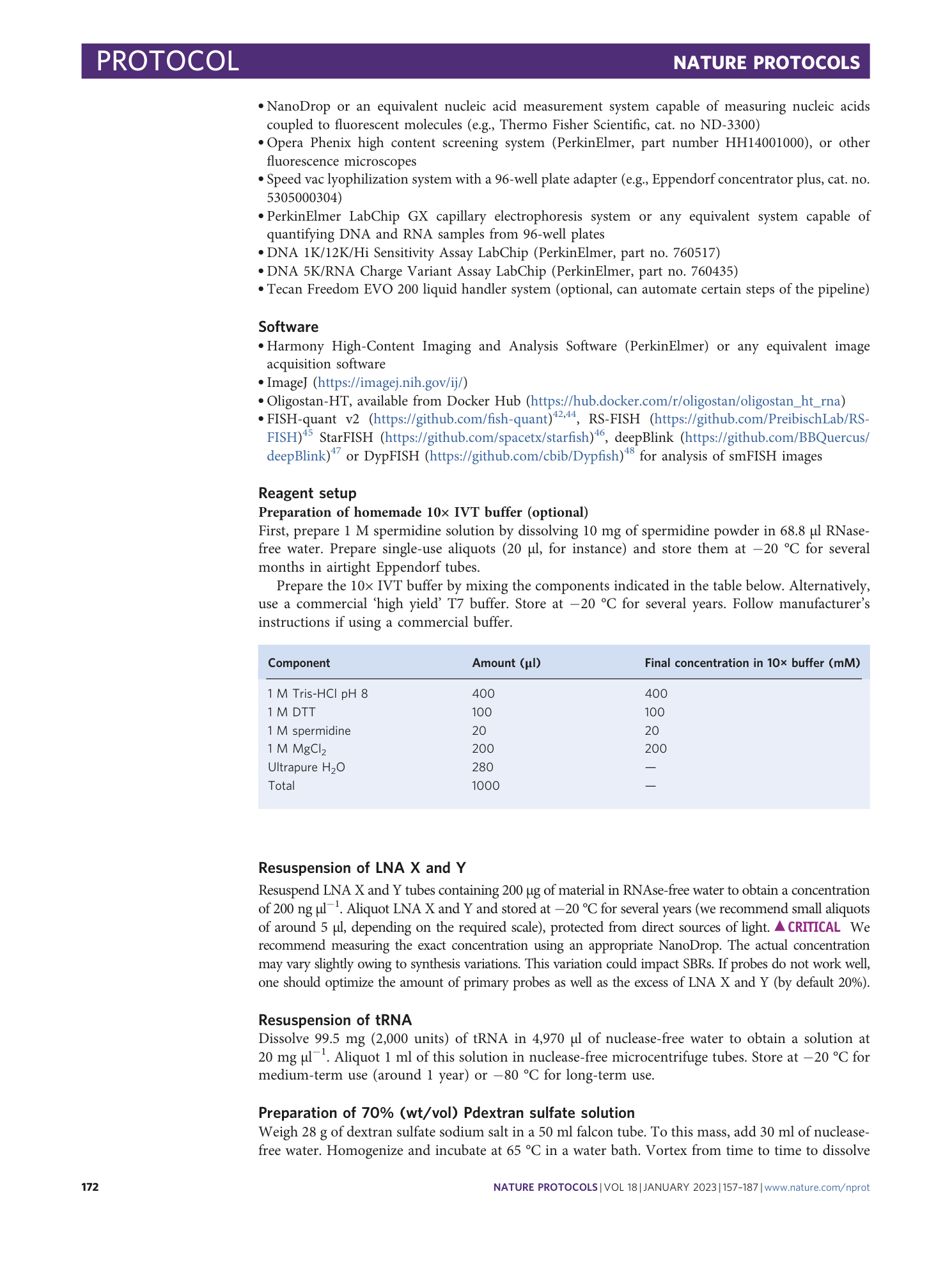
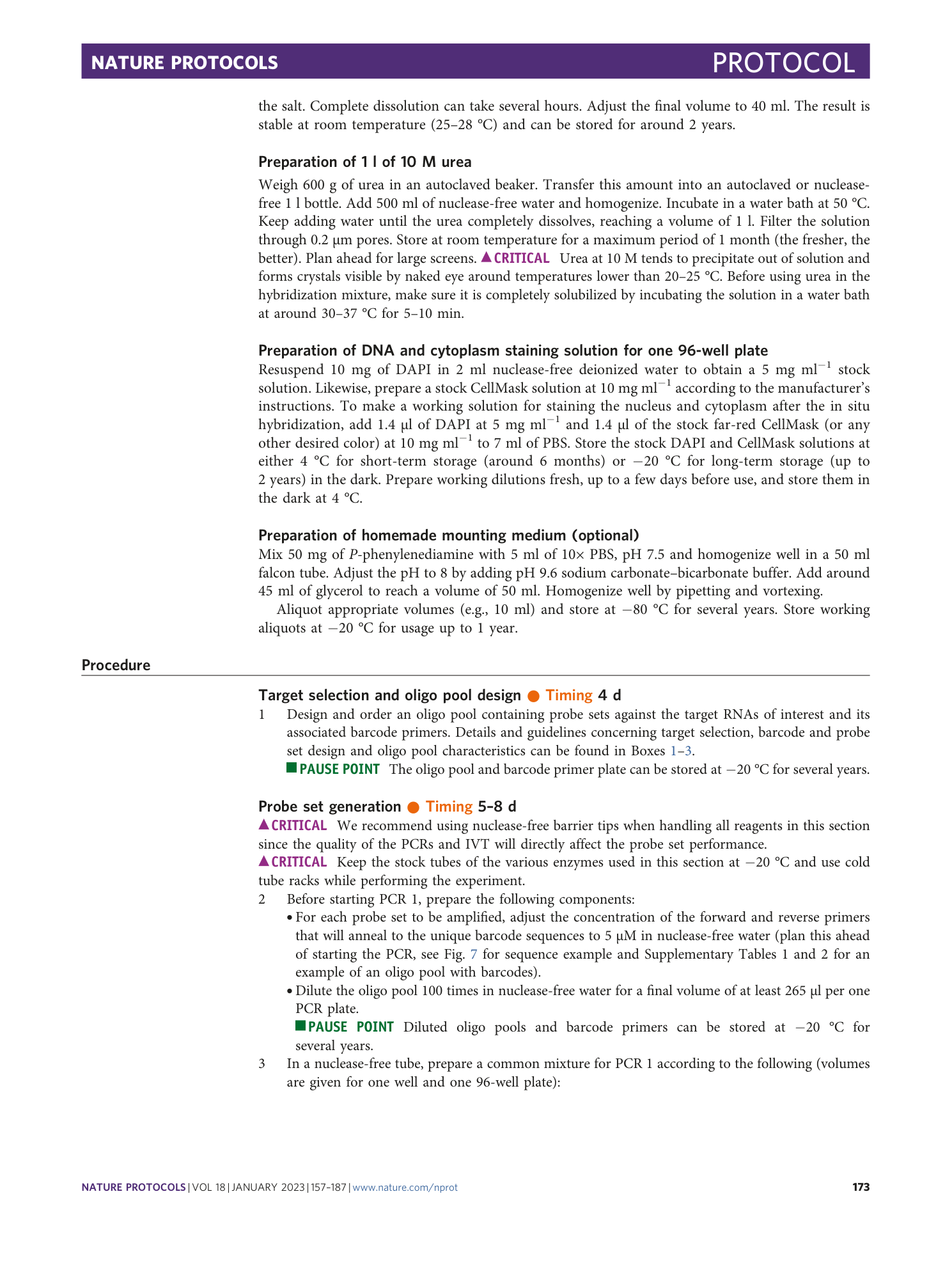
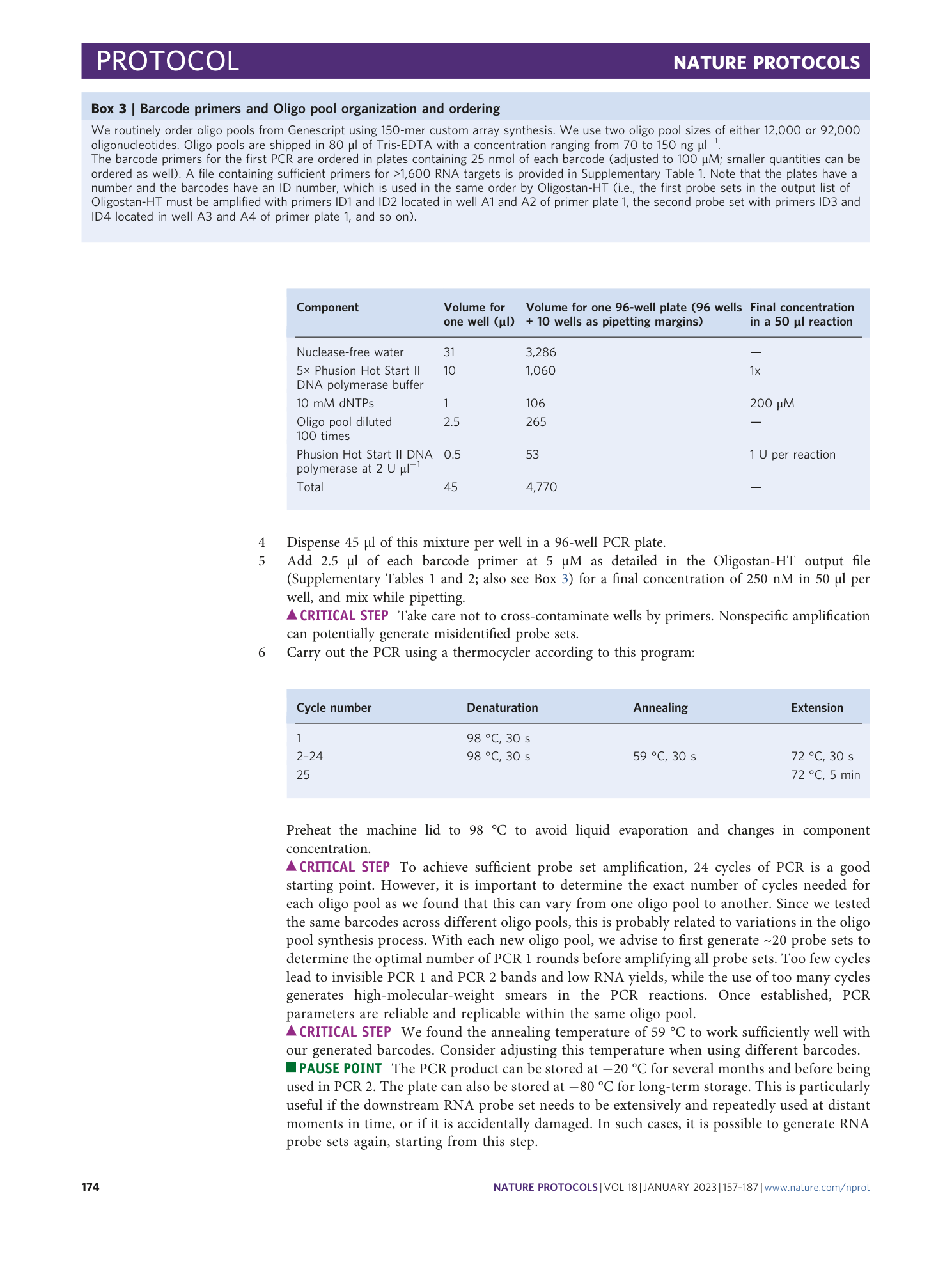
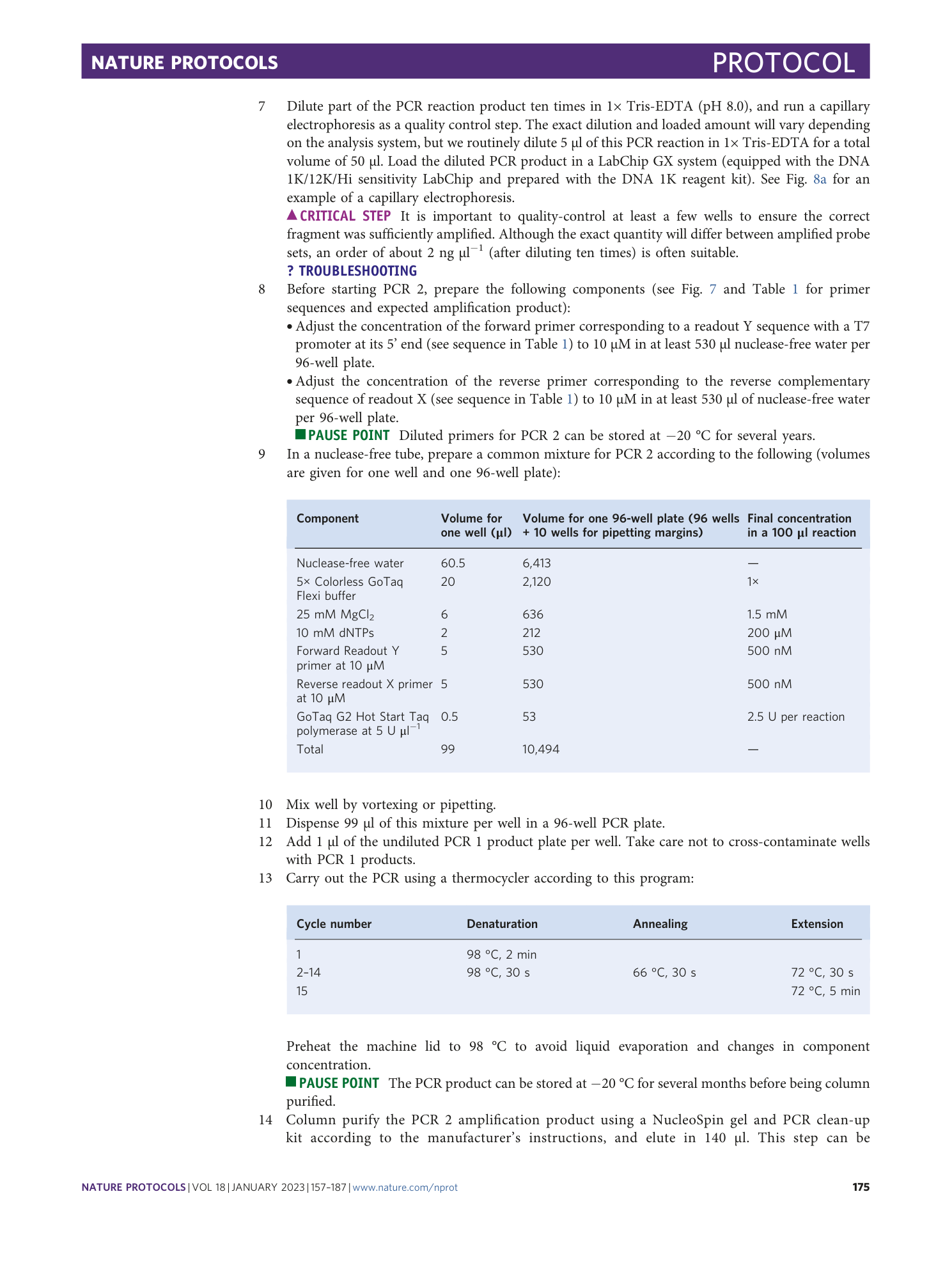
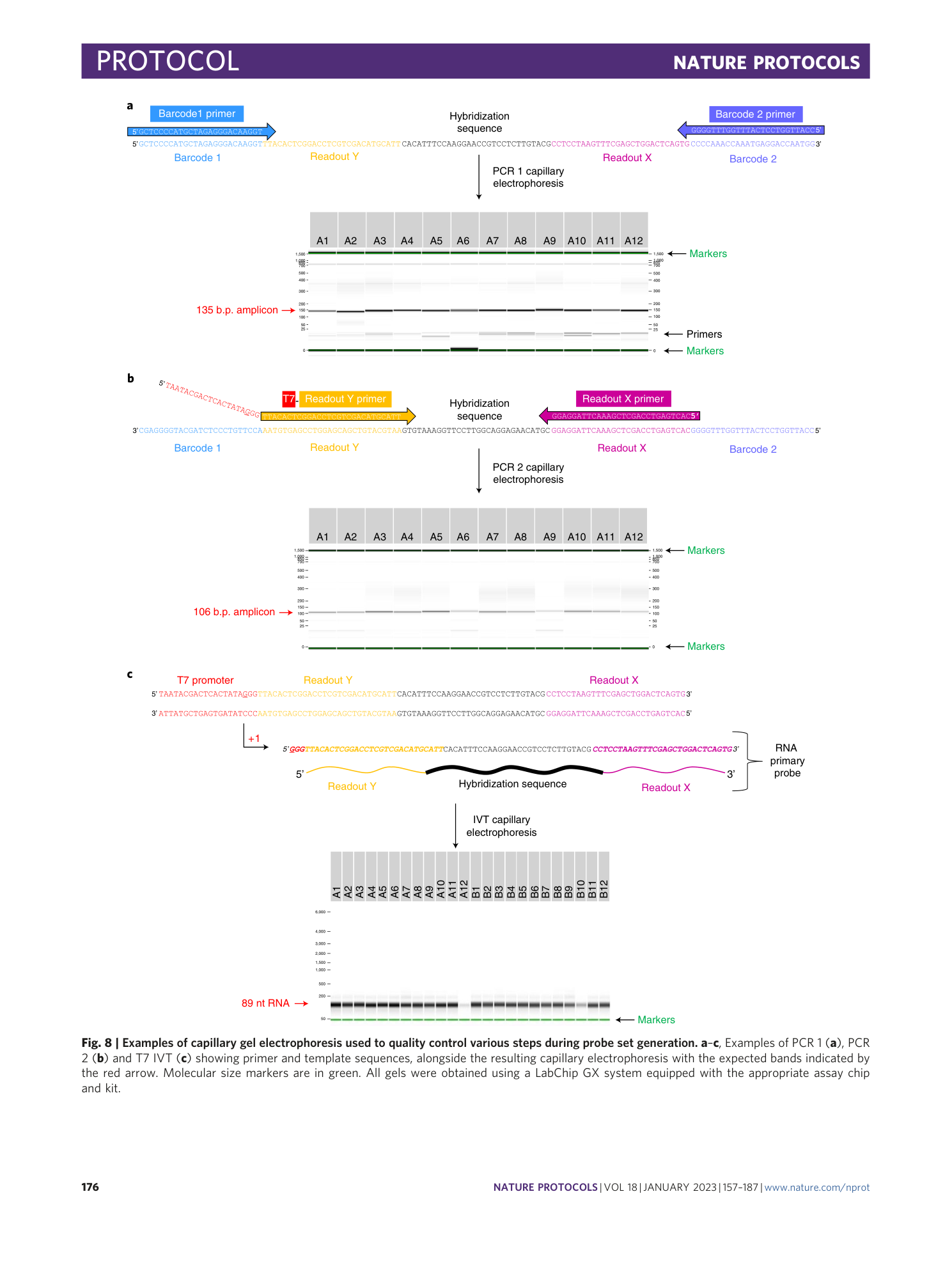
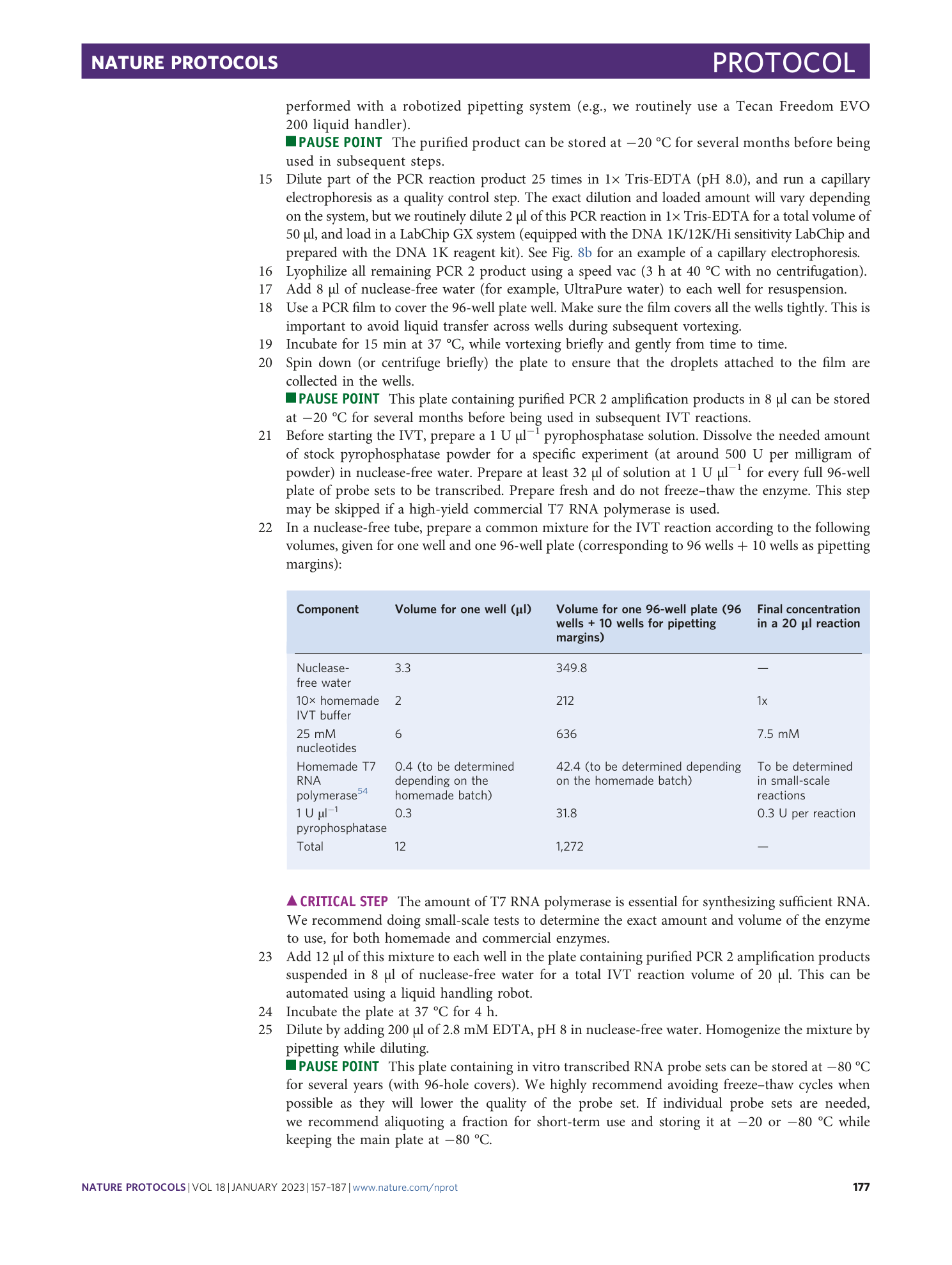
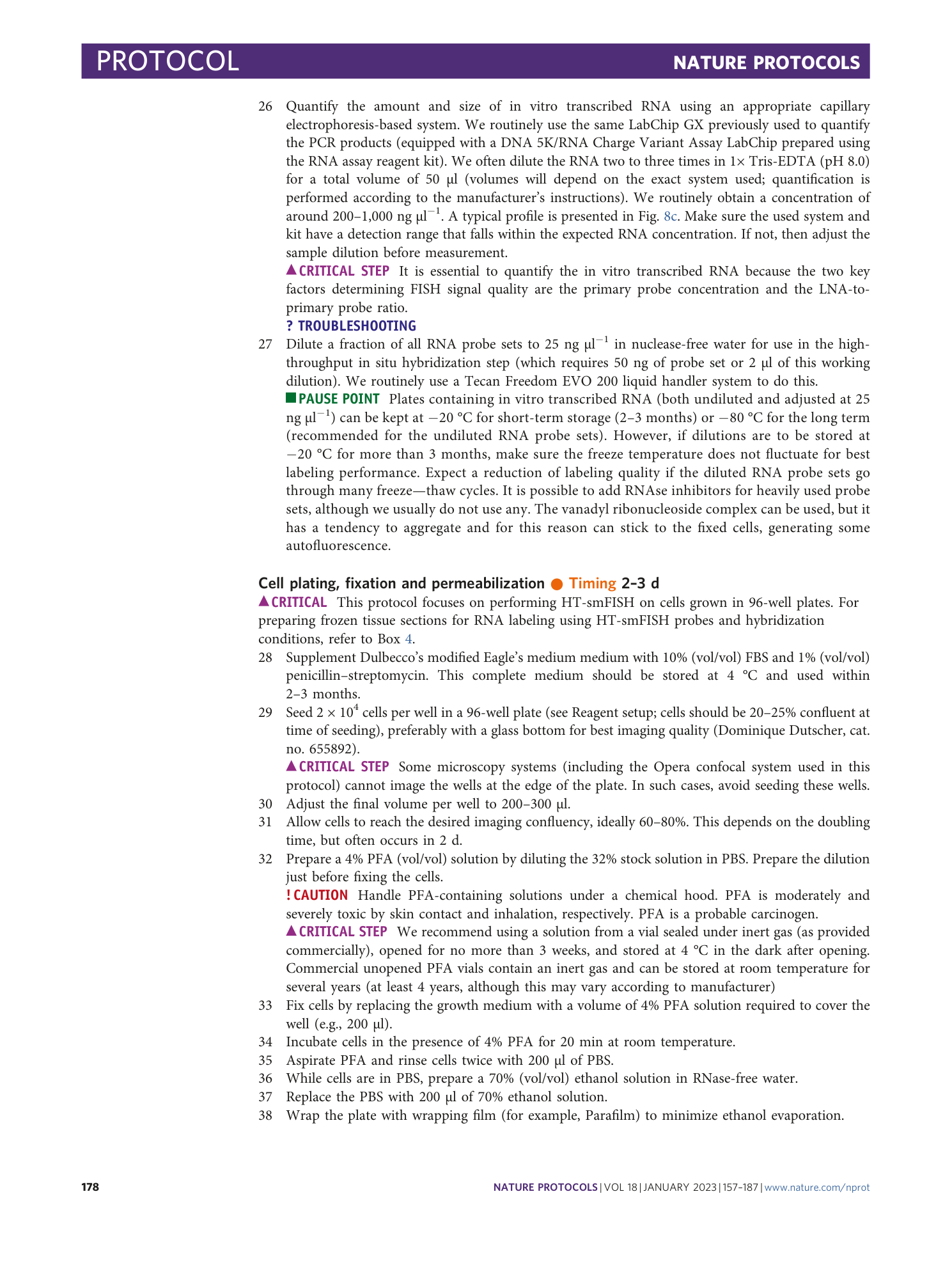
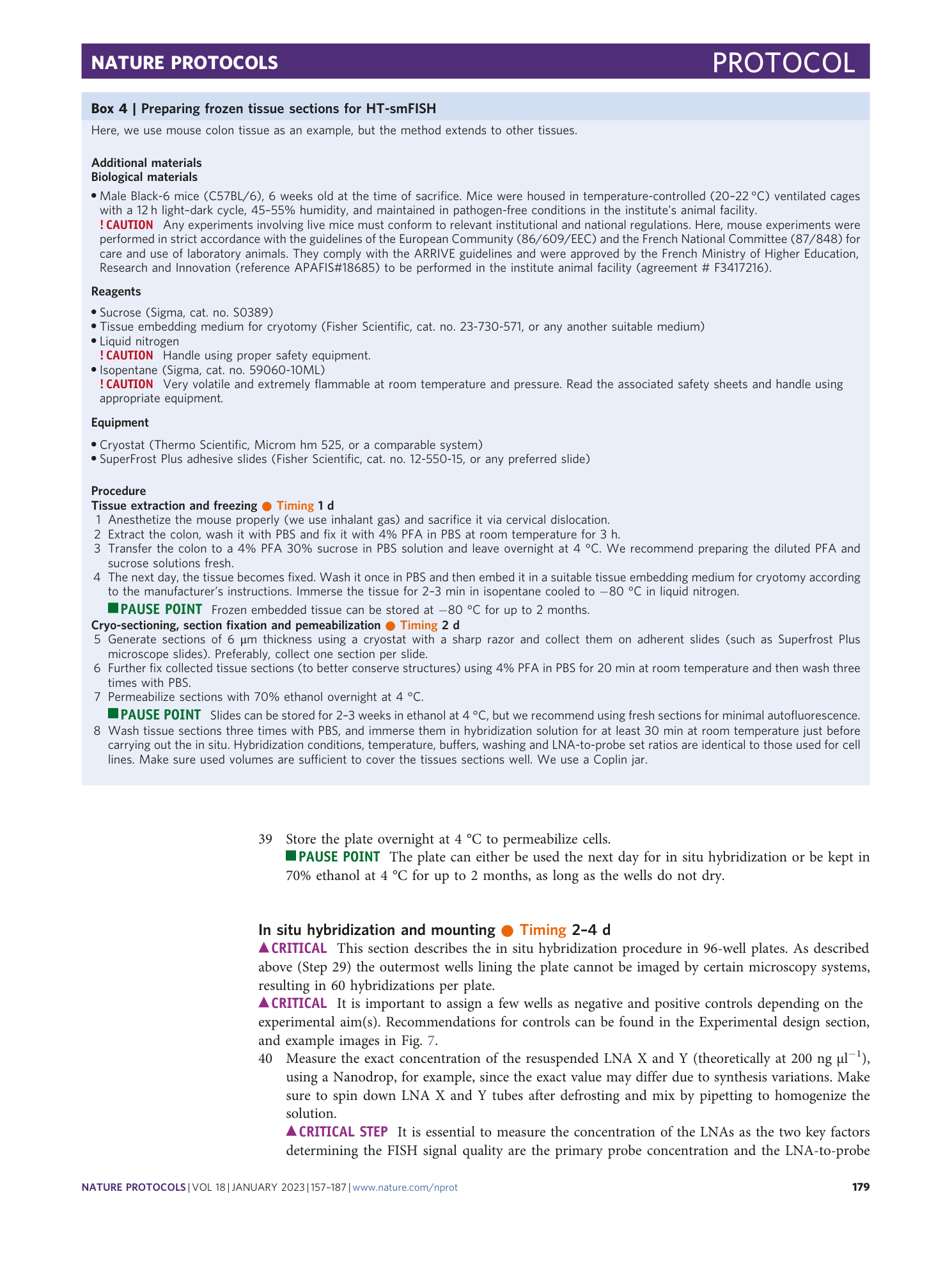
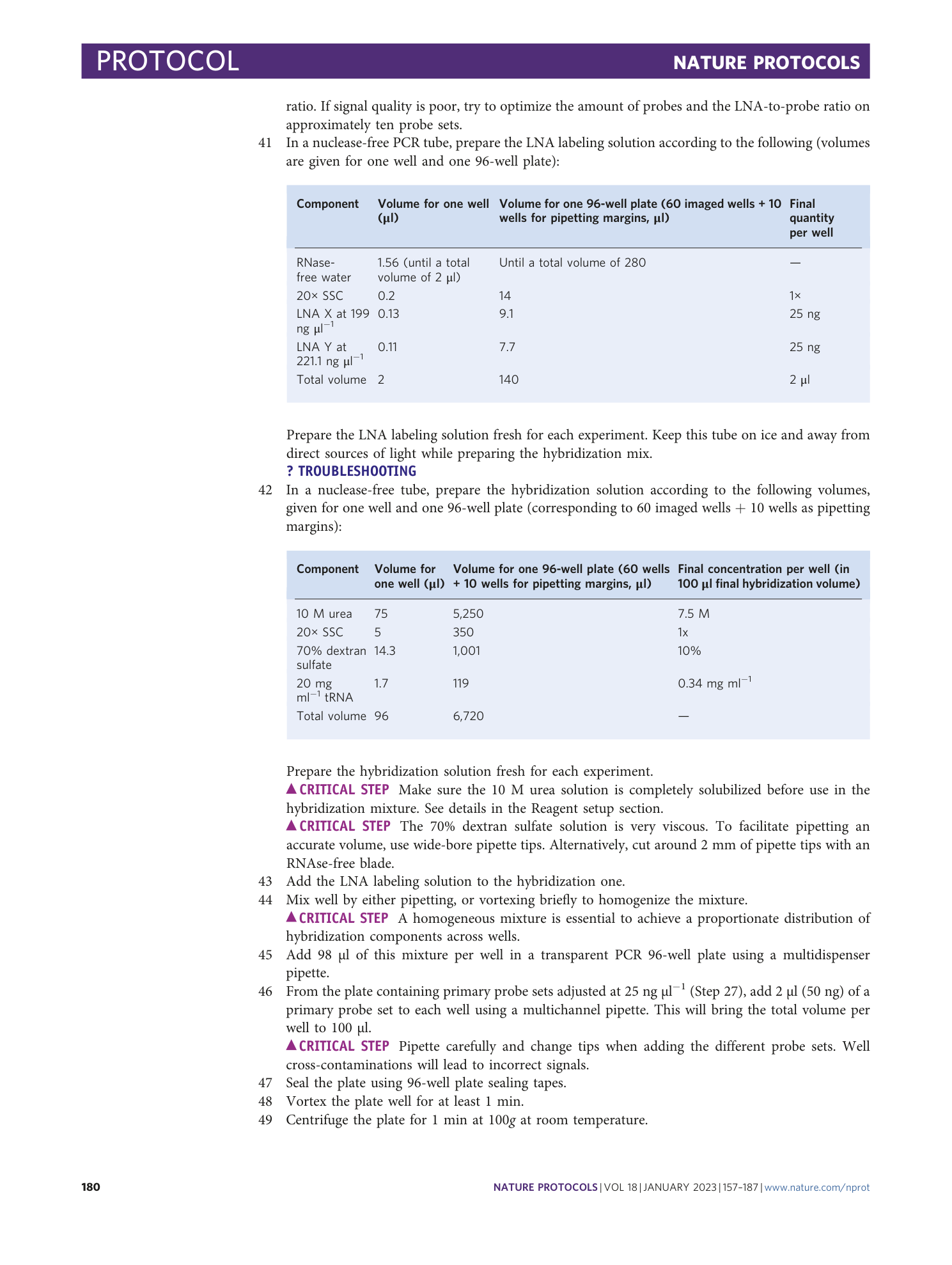
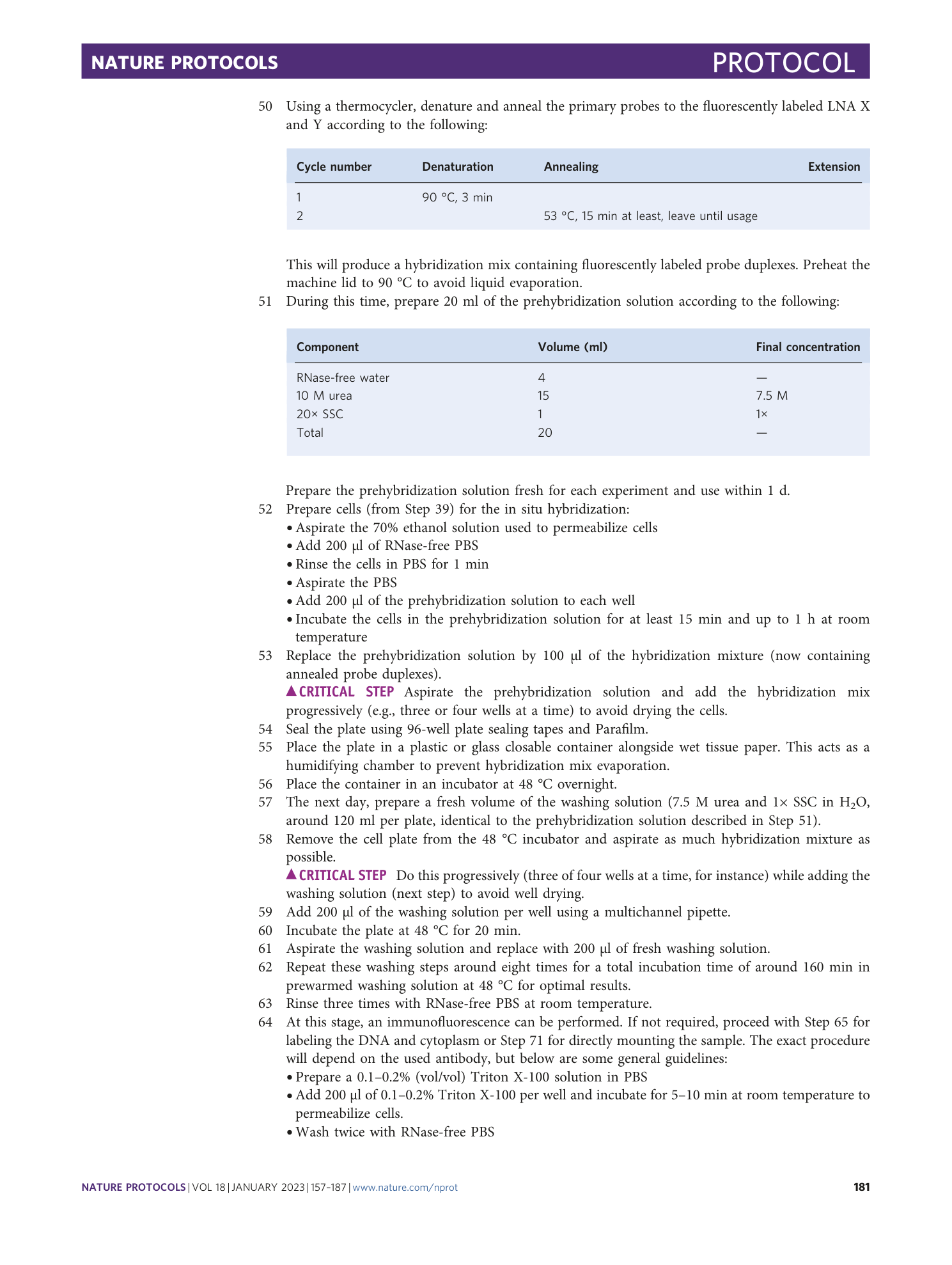
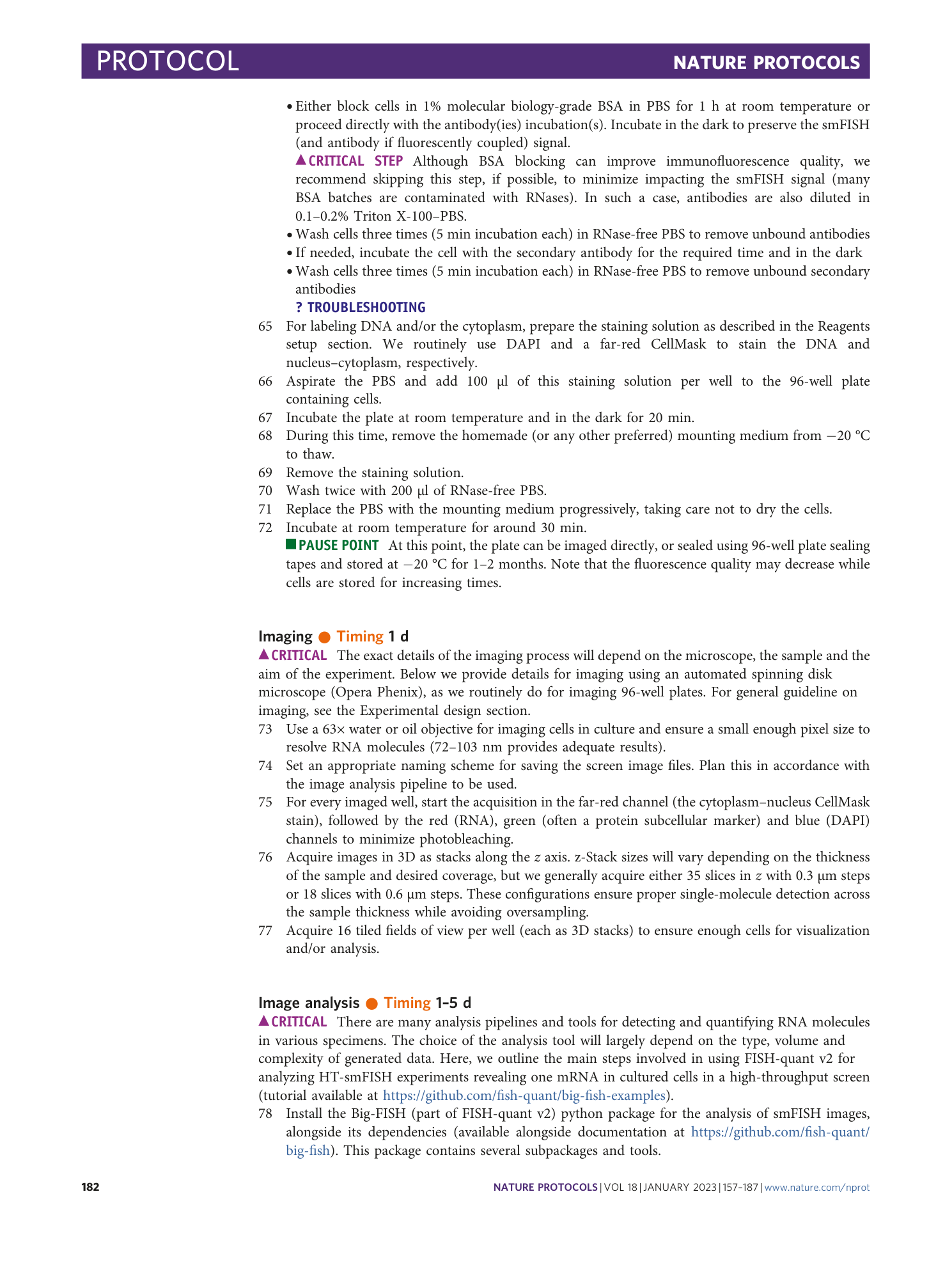
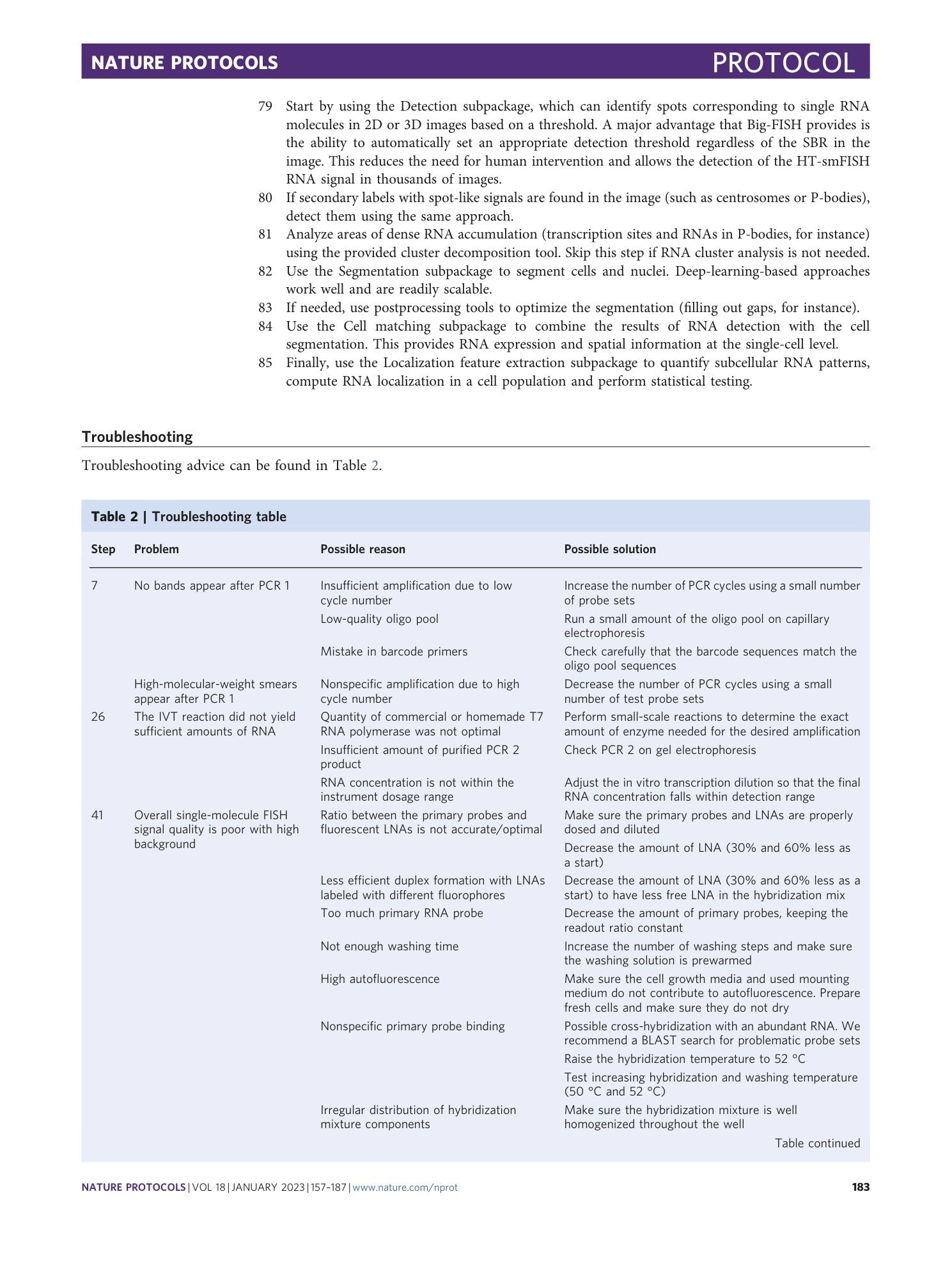
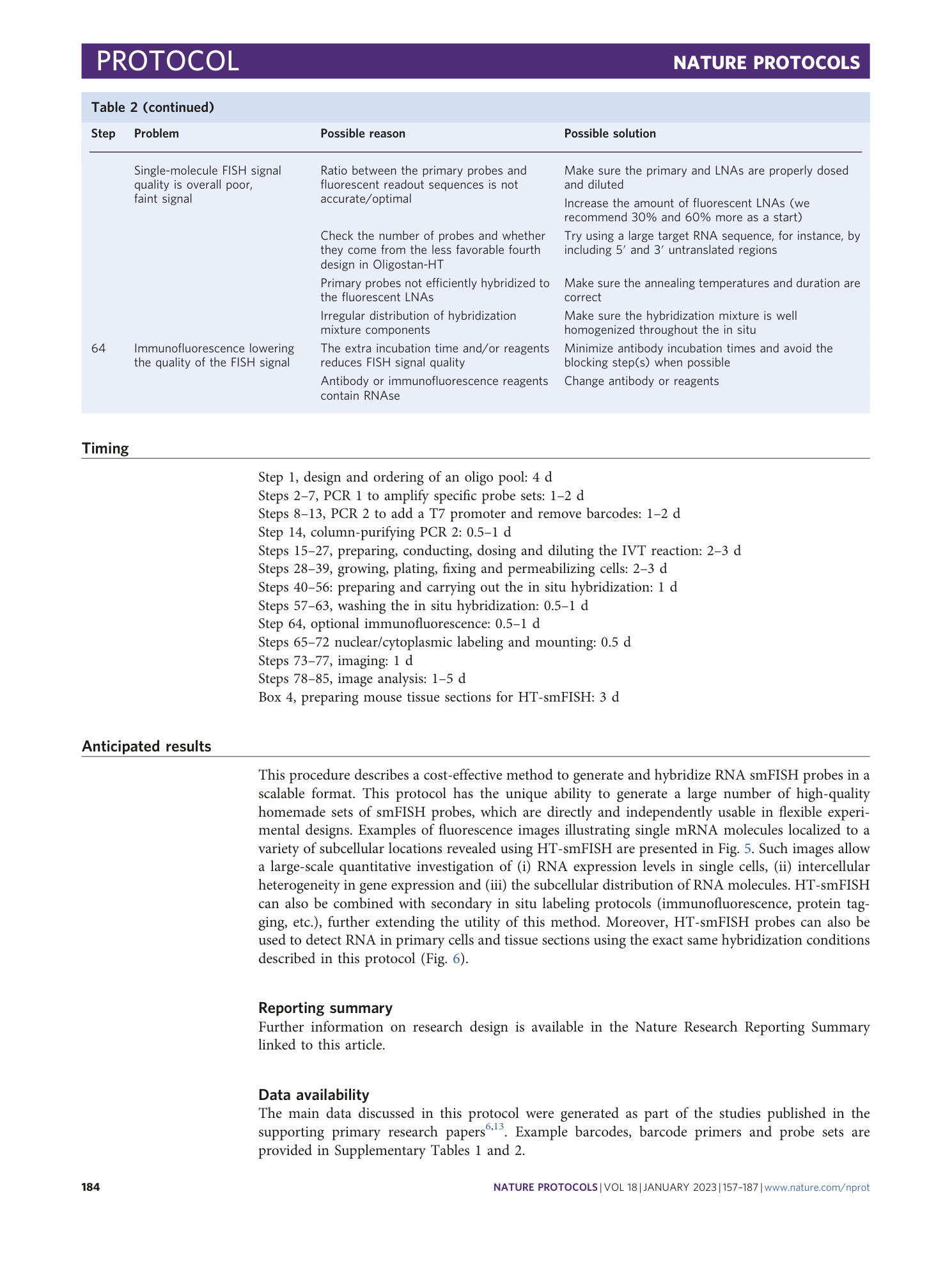
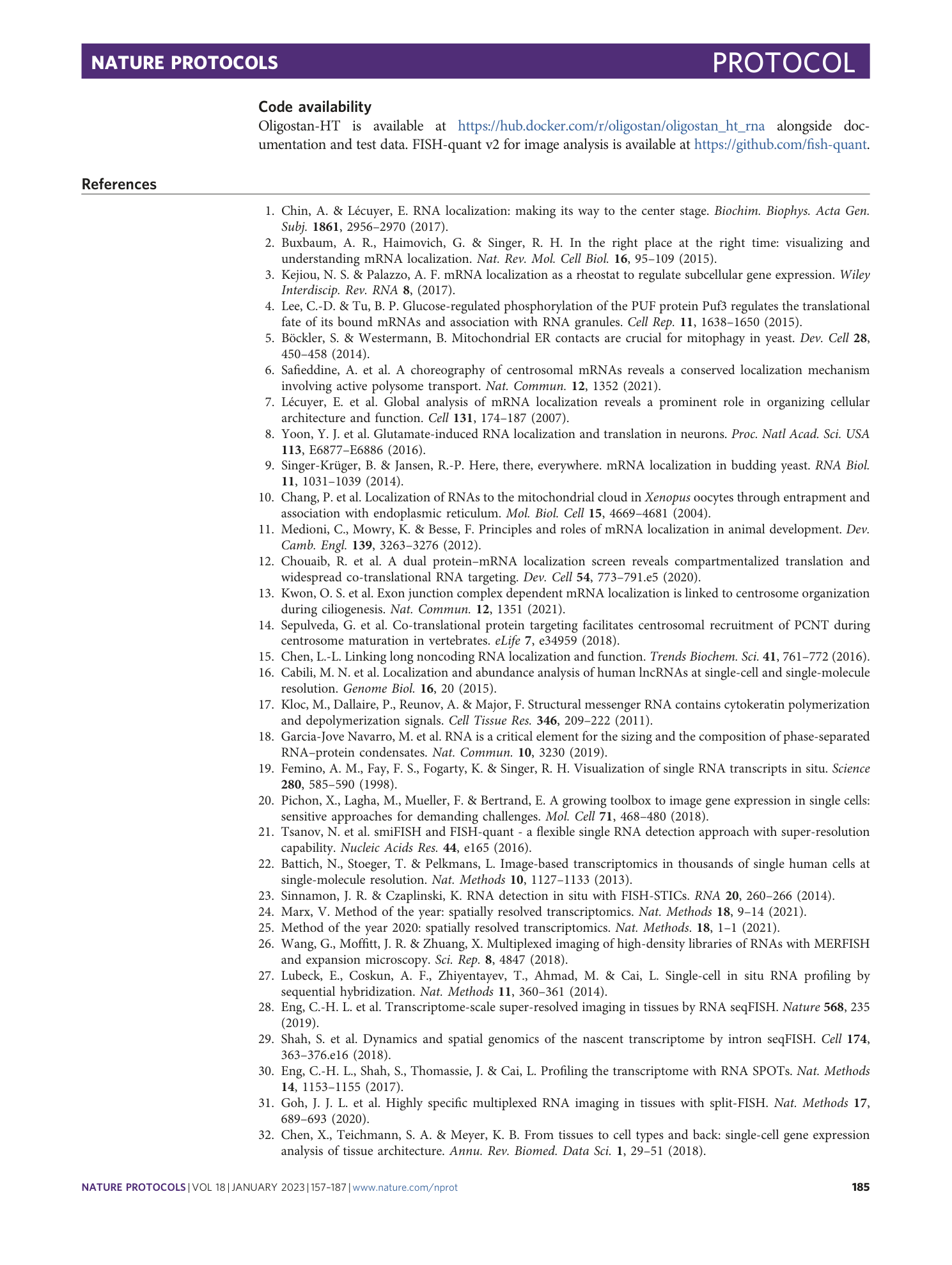
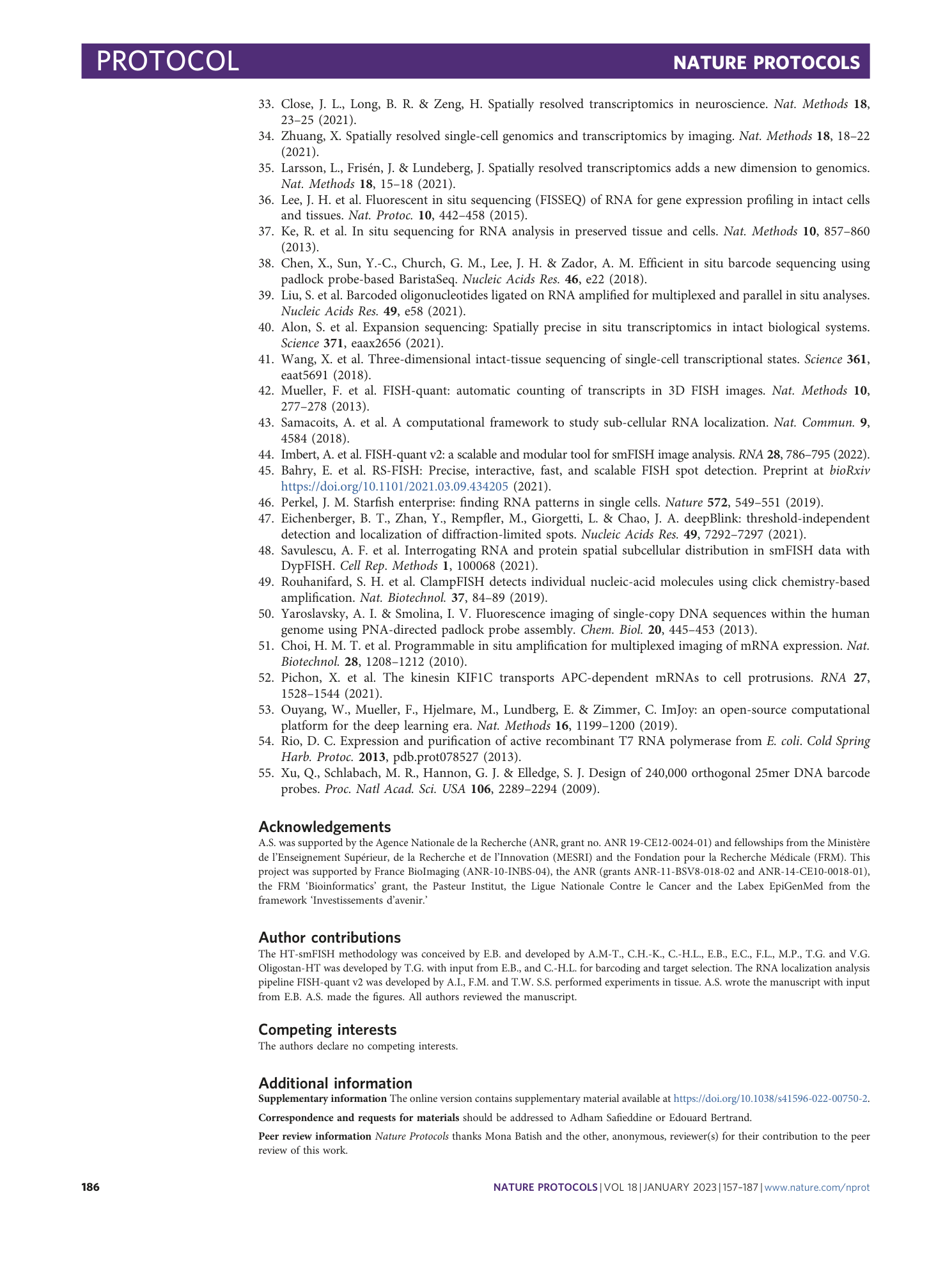


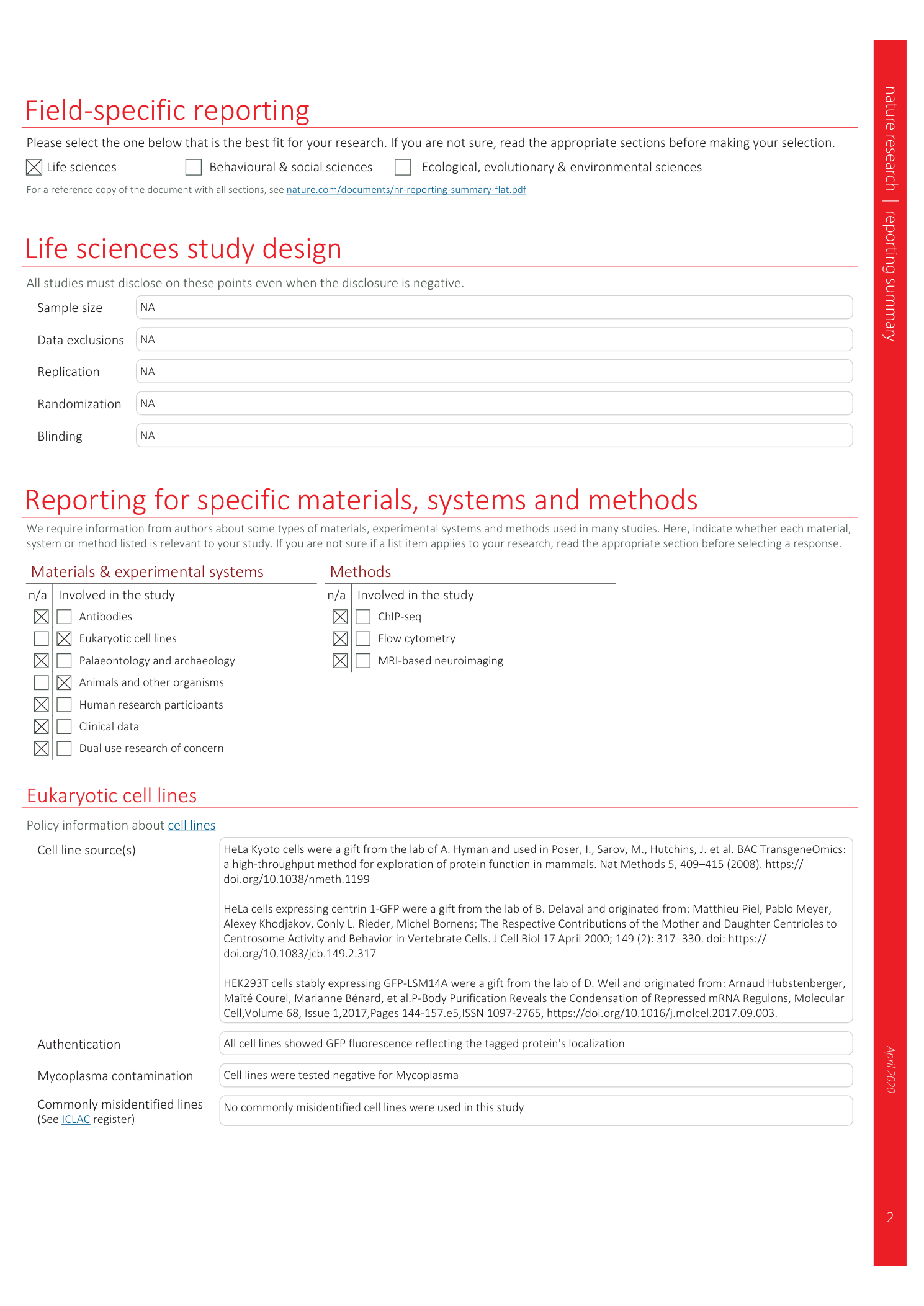
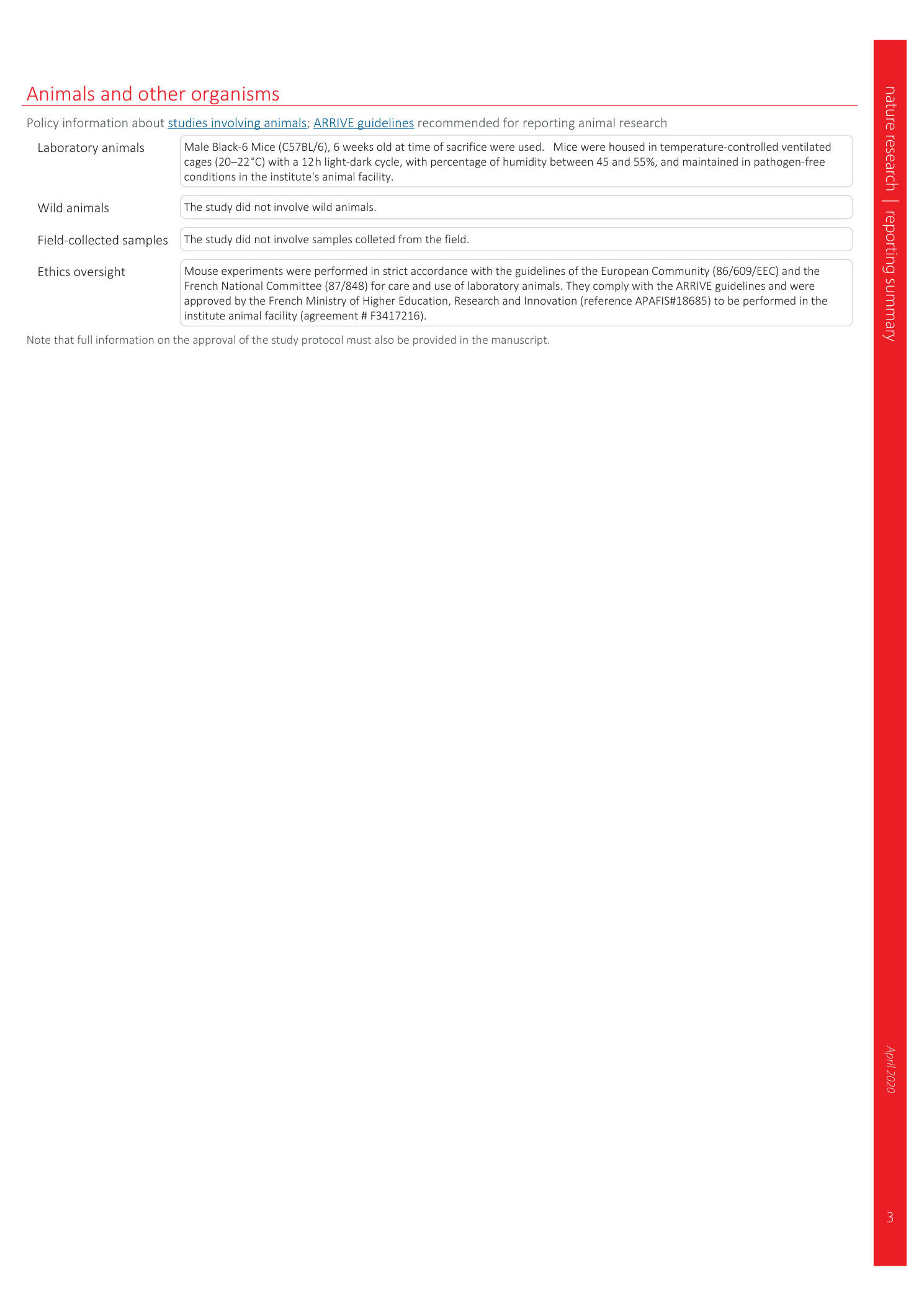
Supplementary information
Reporting Summary
Supplementary Table 1
Barcodes and PCR barcode primers to be ordered. The primers are organized by plate and ID. Oligostan-HT uses this order such that the first two primers of plate 1 (wells A1 and A2) are used to PCR the first probe set in the Oligostan-HT output file, the next two (wells A3 and A4) for the second probe set, and so on.
Supplementary Table 2
A sample of Oligostan-HT’s output. The output is shown in an Excel sheet with several columns. ENST, ensemble transcript identifier; ENSGx, ensemble gene identifier; GeneName, name of gene or RNA; SET, the experiment to which the probe set belongs; dGOpt, Δ G 37°C reference value (yielding the highest number of probes); Start/End Pos, the start and end position of the probe with respect to the target transcript’s coding sequence; ProbeSize, the length of the probe’s hybridization sequence; Seq, the probe’s hybridization sequence; dGScore and dG37, Δ G 37°C score (higher is better) and value; GCpc, percentage of GC in the hybridization sequence; GCFilter, whether the probe satisfies the specified % GC filter; aCompFilter, whether the probe contains an A nucleotide composition <28%; aStackFilter, whether the probe does not contain AAAA stacks; cCompFilter, whether the probe contains an C nucleotide composition between 22% and 28%, cStackFilter, whether the probe does not contain CCCC stacks; cSpecStackFilter, whether the probe does not contain four nonconsecutive Cs in any six consecutive nucleotides in the first twelve positions; NbOfPNAS, the number of filters satisfied (from ref. 55 ); PNASFilter, whether the probe satisfies the assigned number of PNAS filters; RSESeqFilter, whether probes contain a restriction enzyme site, filter not used; InsideUTR, whether the probe is inside a UTR; BC1ID, ID of the first barcode to be used to amplify the probe; BC1PN, the number of the plate in which the barcode is stored; BC1WP, position of the barcode in the 96-well plate; BC1, sequence of barcode 1; BC2ID, BC2PN, BC2WP, BC2, same as barcode 1, but for barcode 2; BC1-Y-Hyb-X-BC2, sequence resulting from concatenation of barcode 1– readout Y–hybridization sequence–readout X–barcode 2; WithComplementSeq, same but with a few additional nucleotides to normalize all oligonucleotide length to facilitate synthesis. This column has the oligo pool sequences to be ordered.

